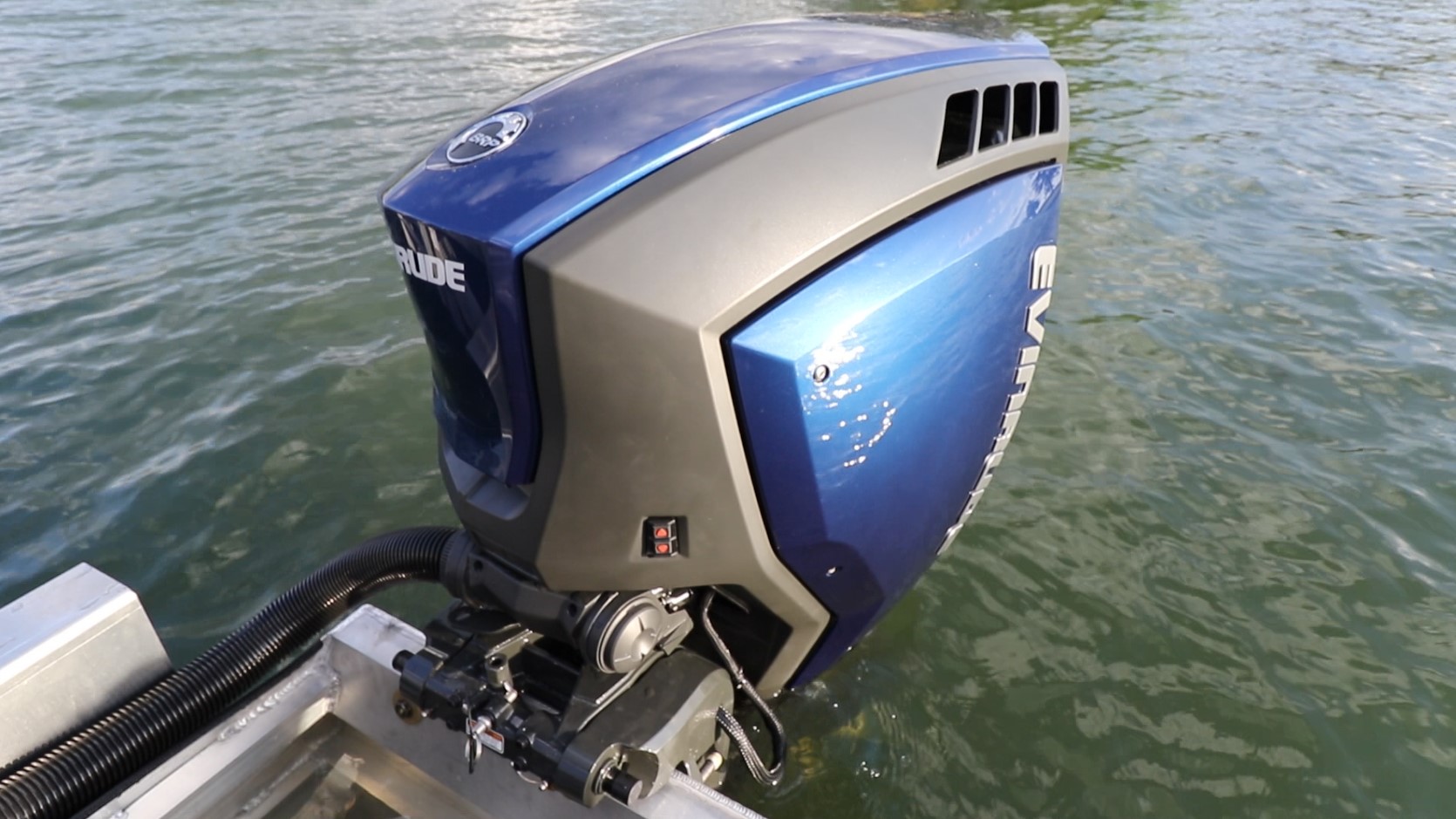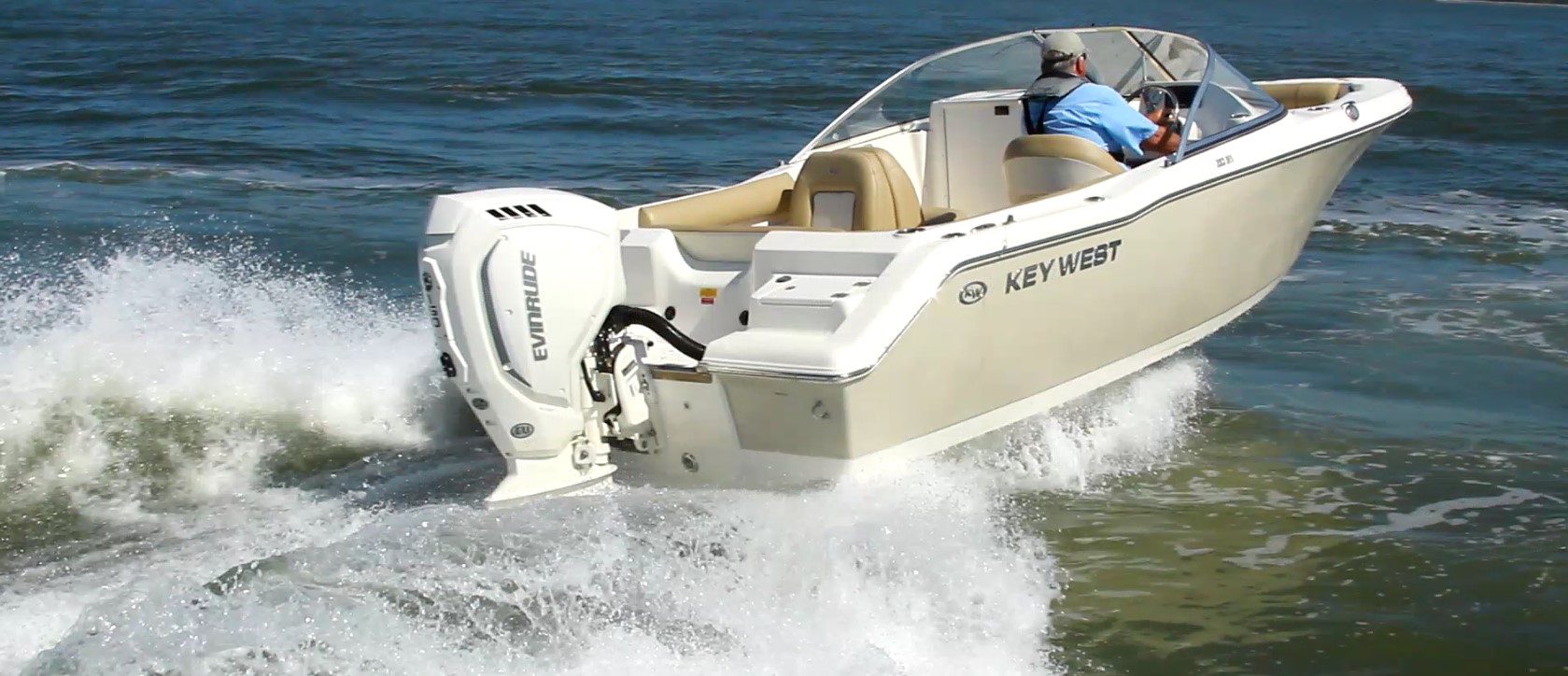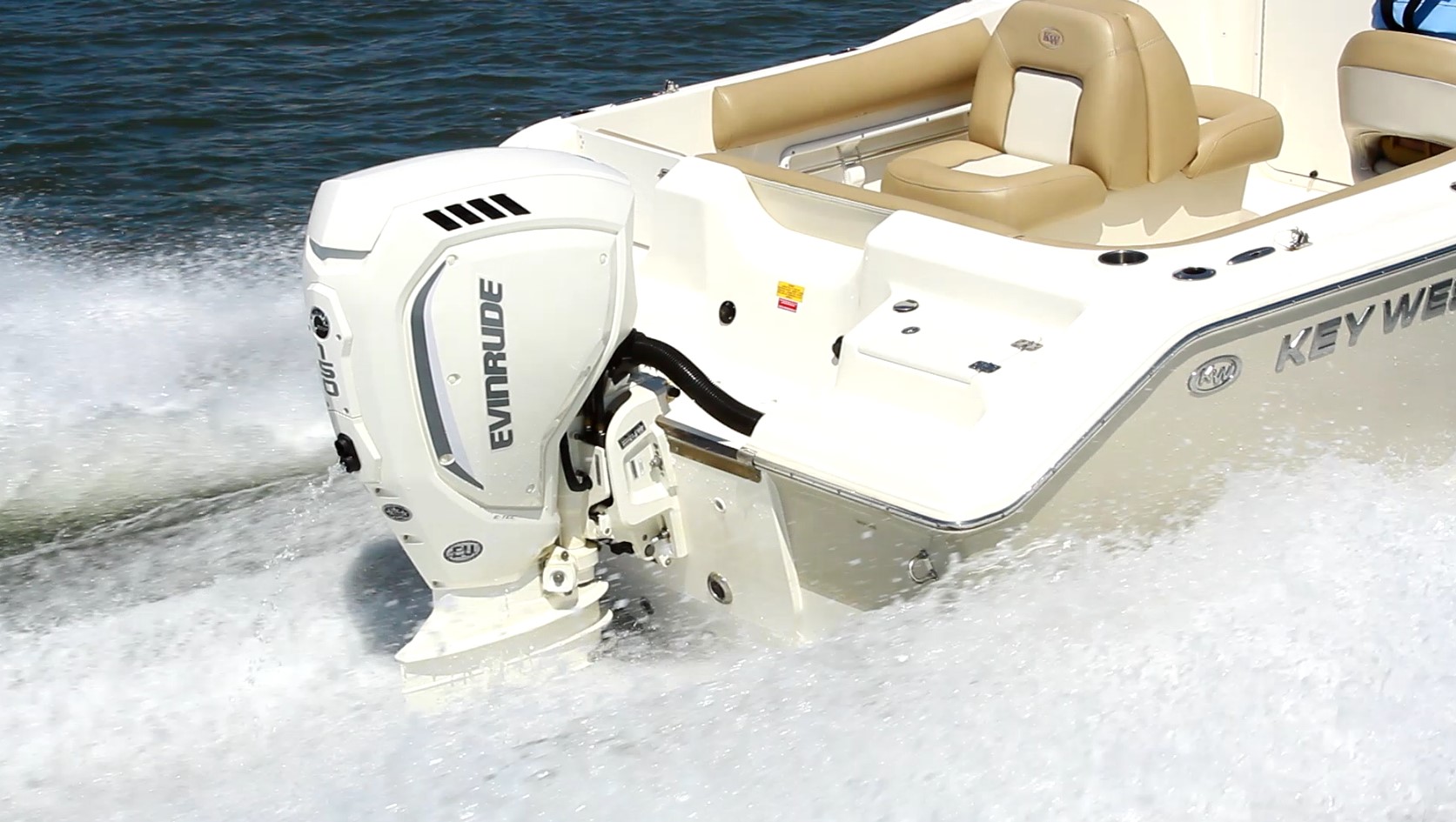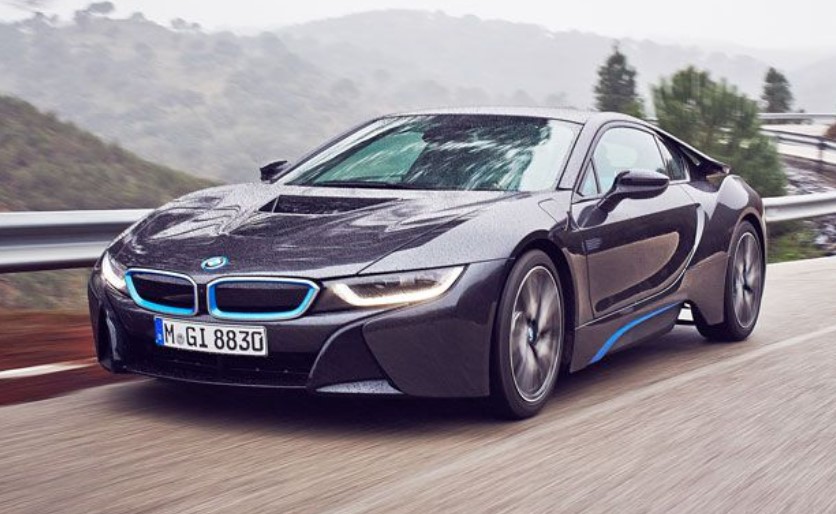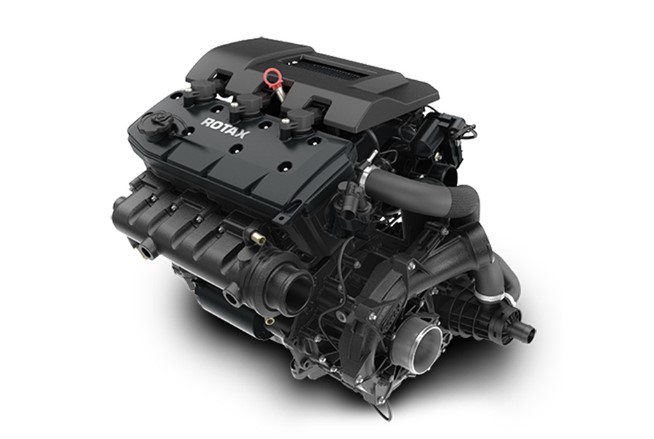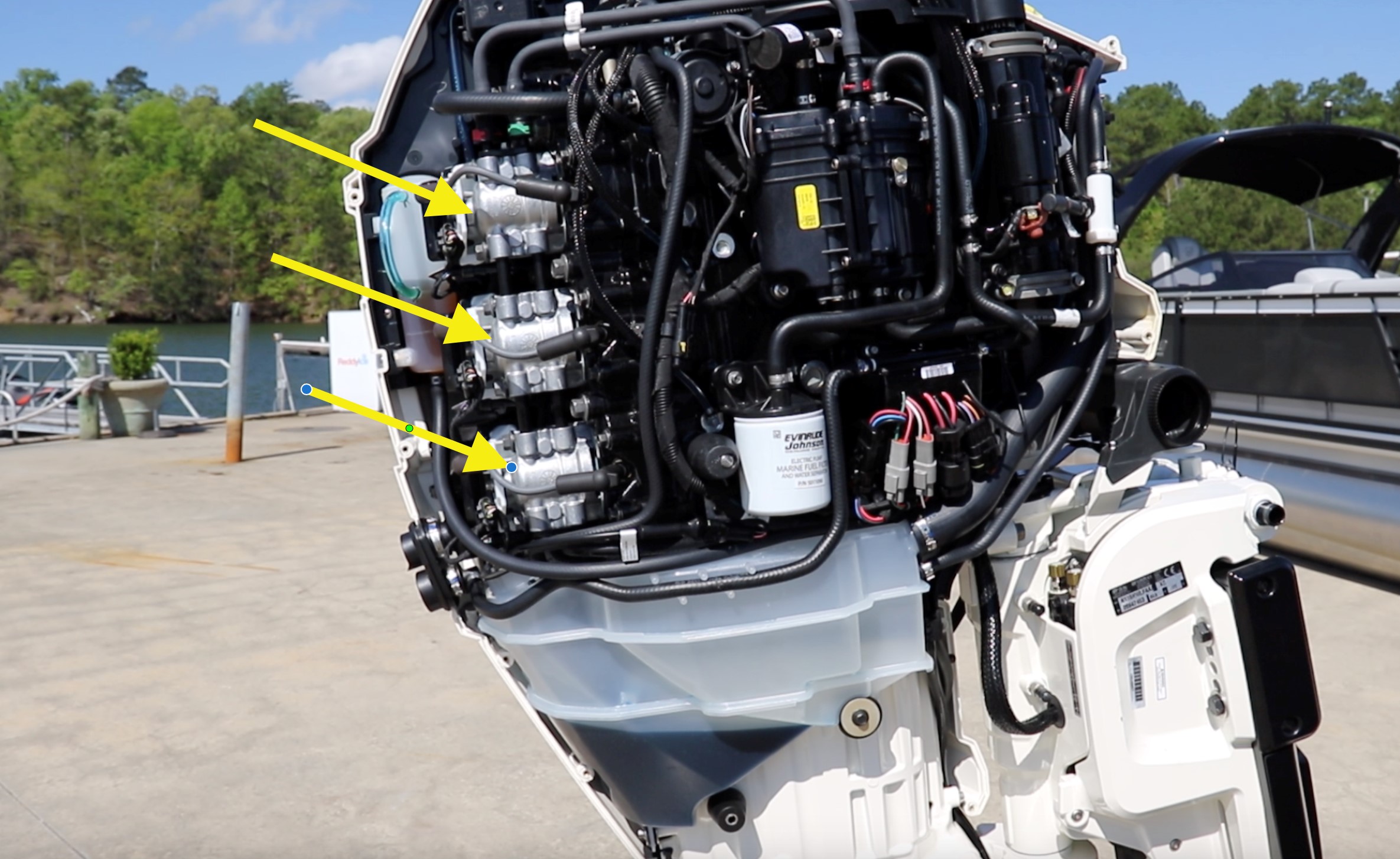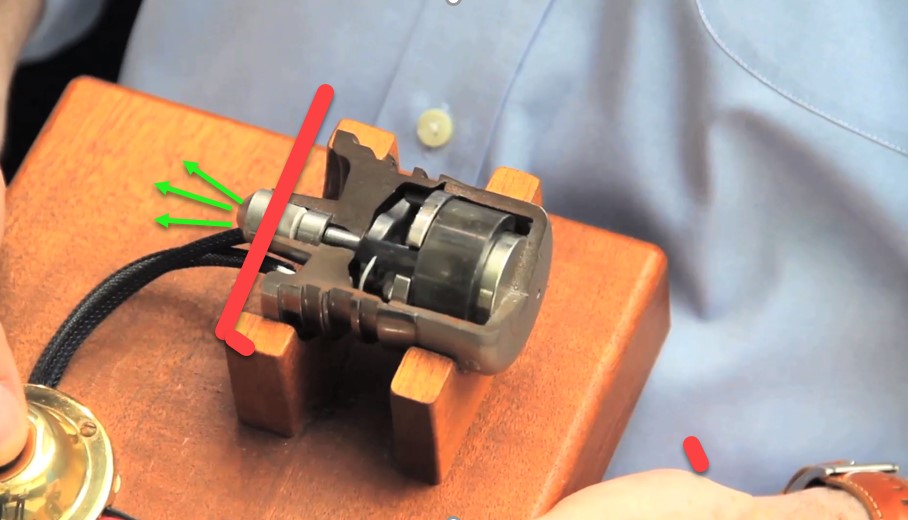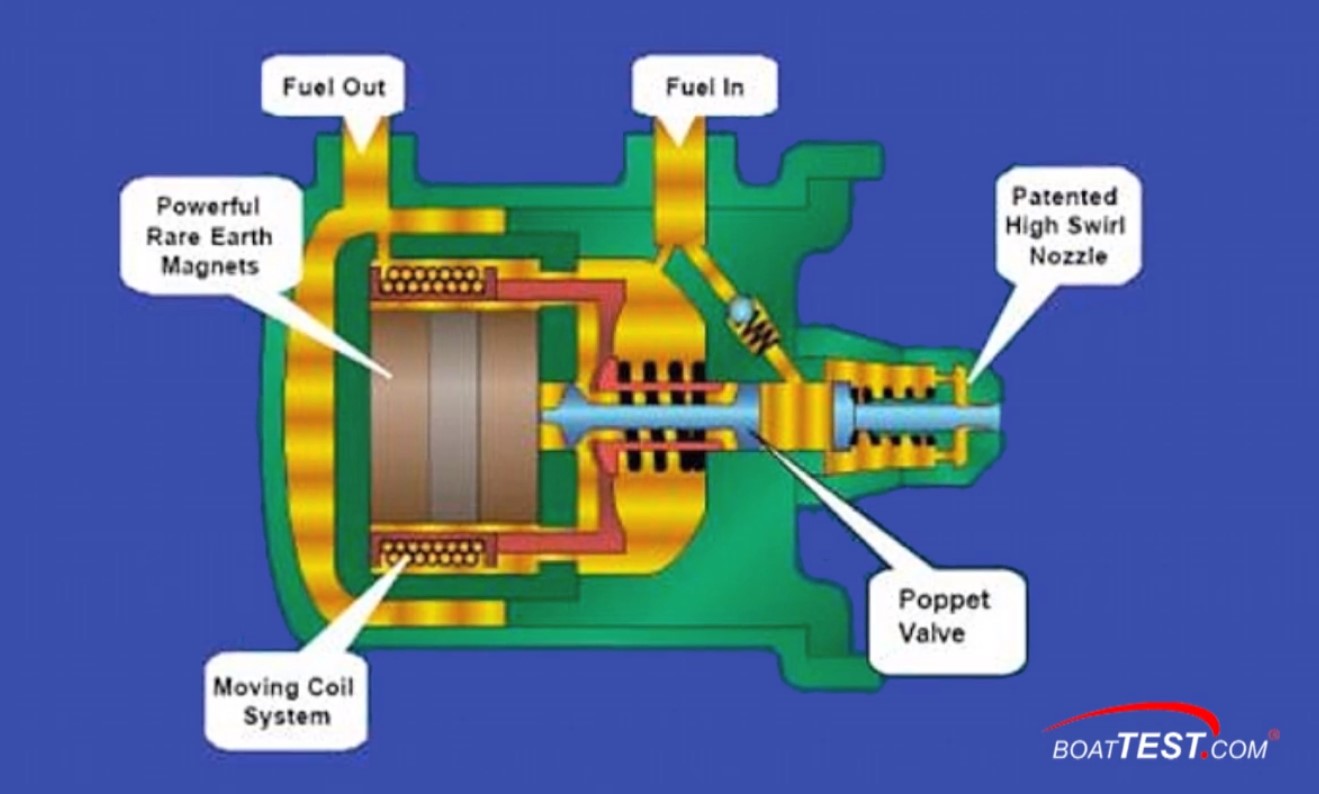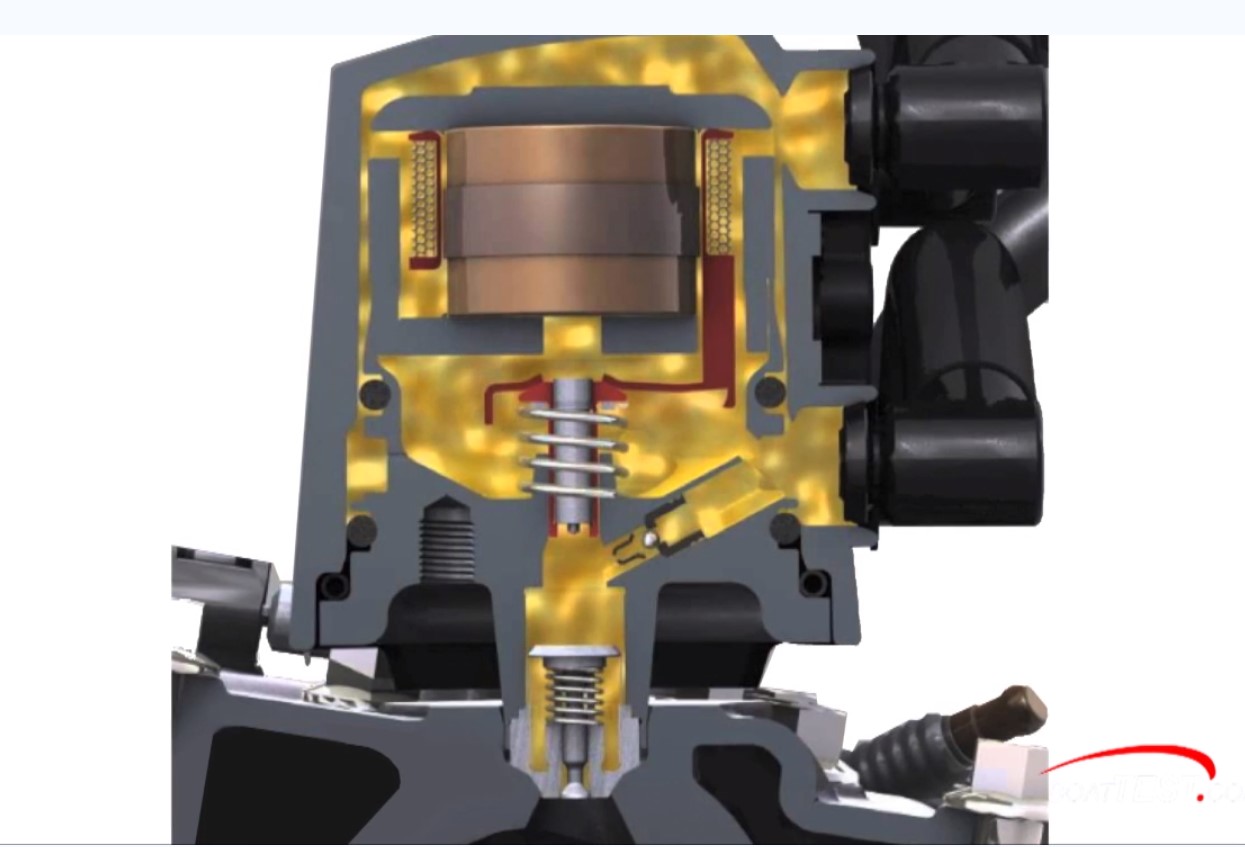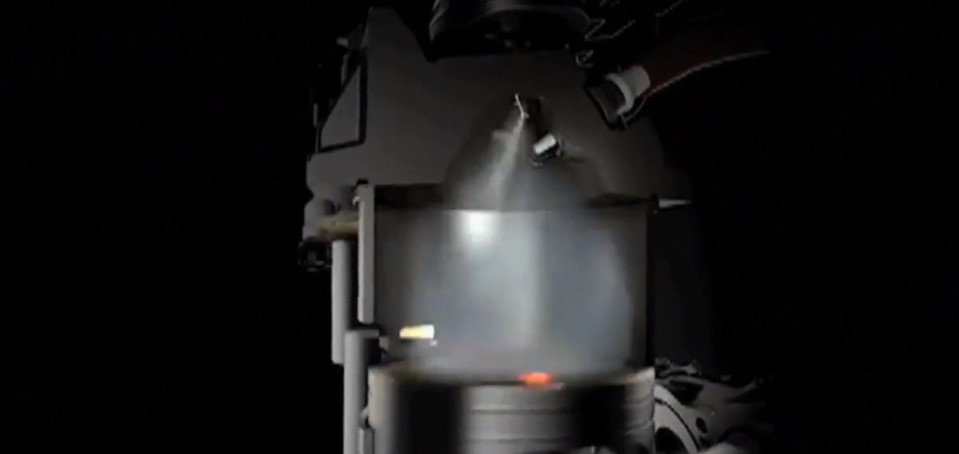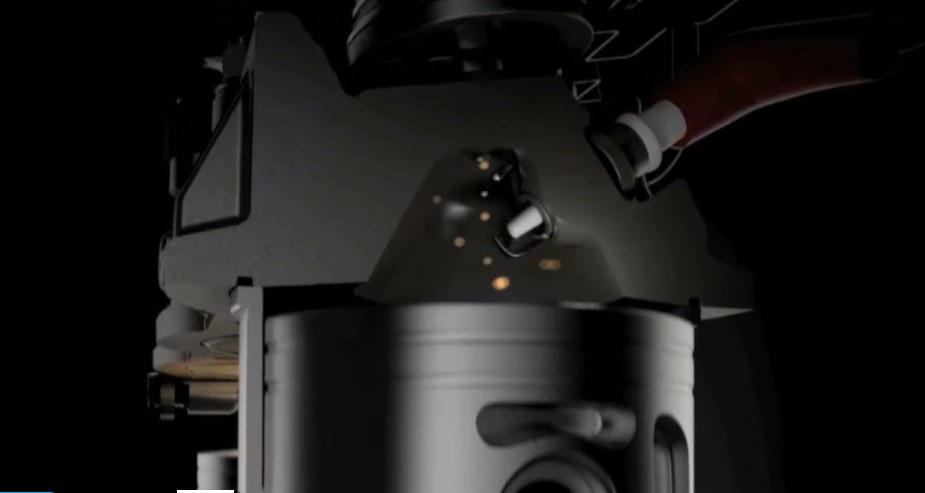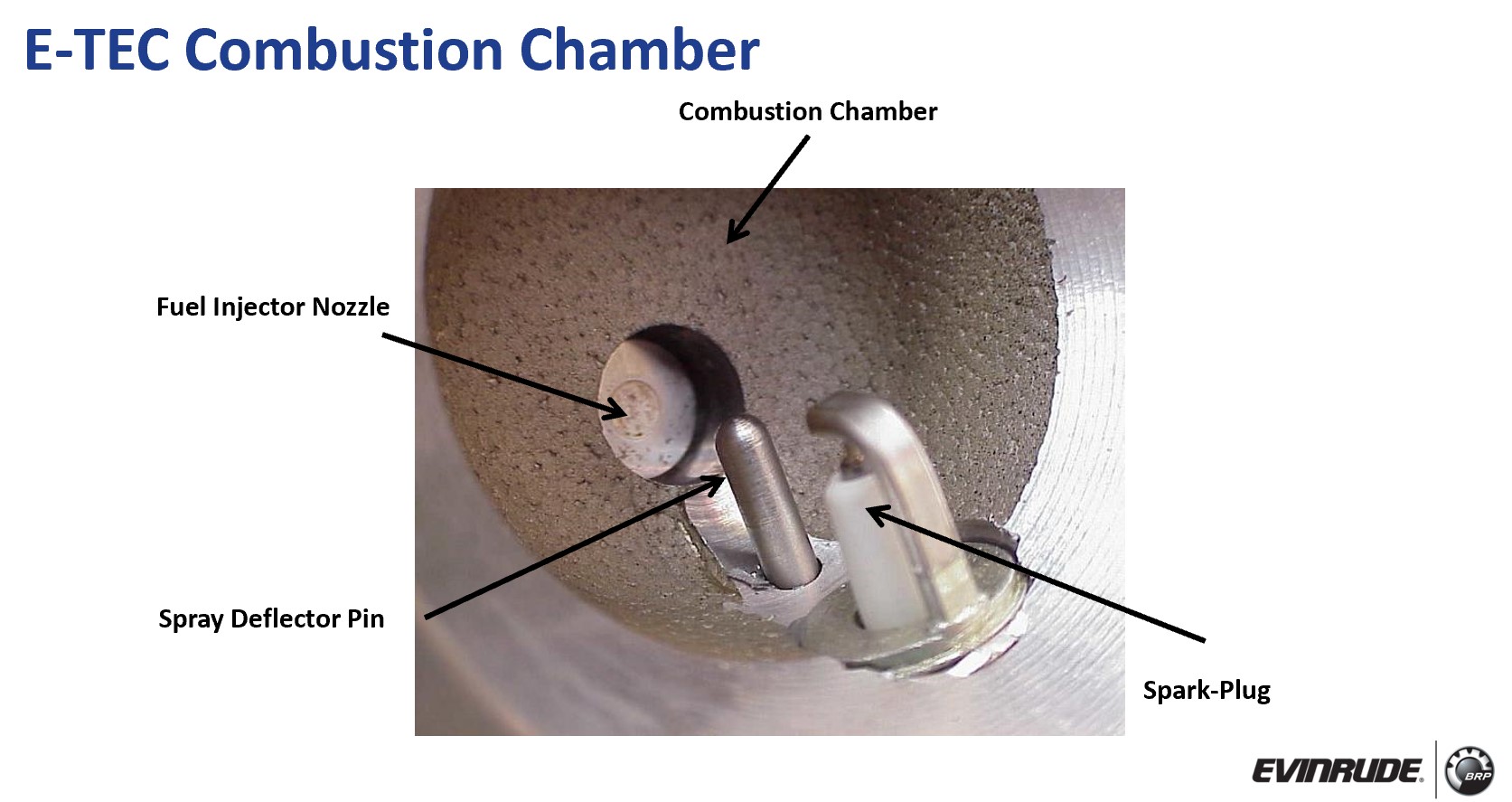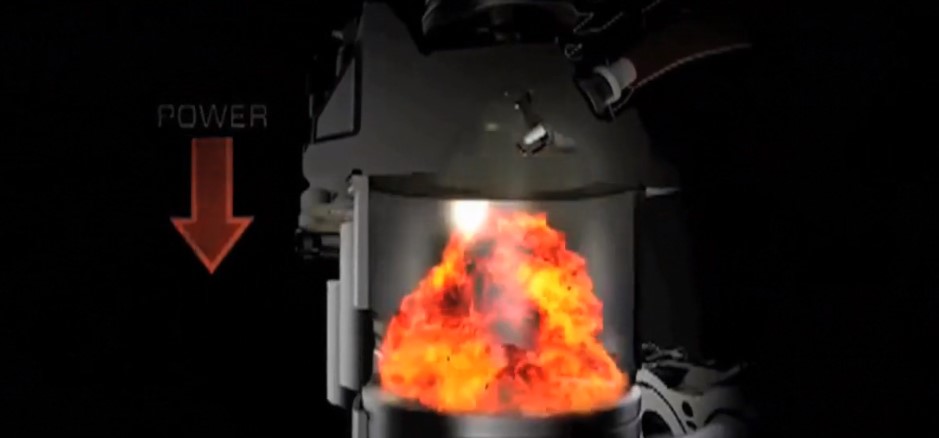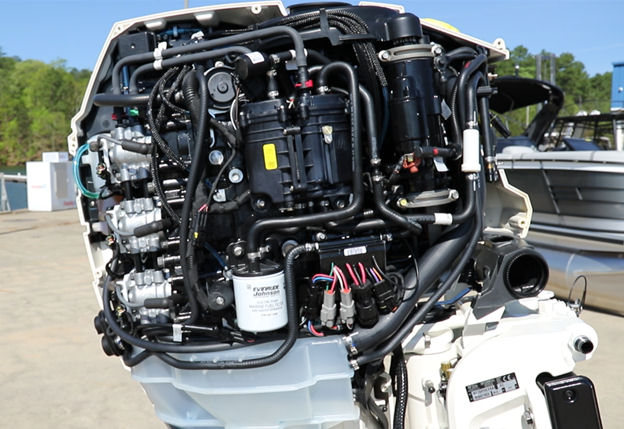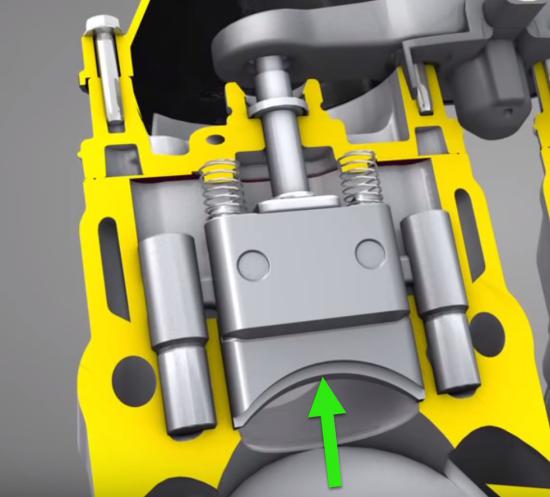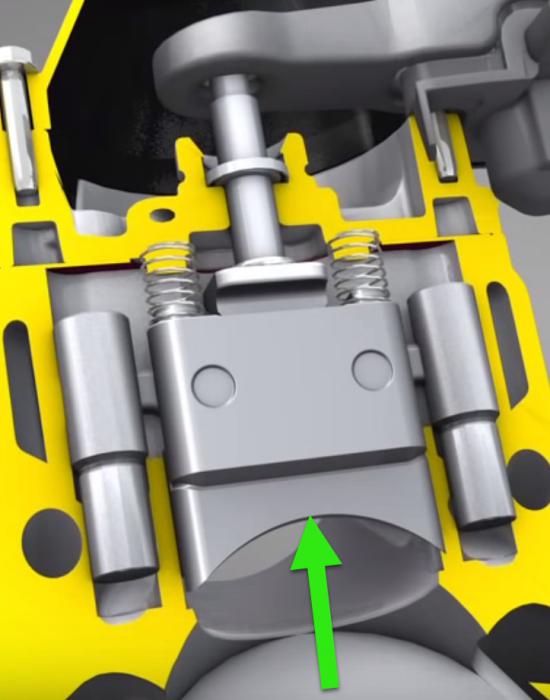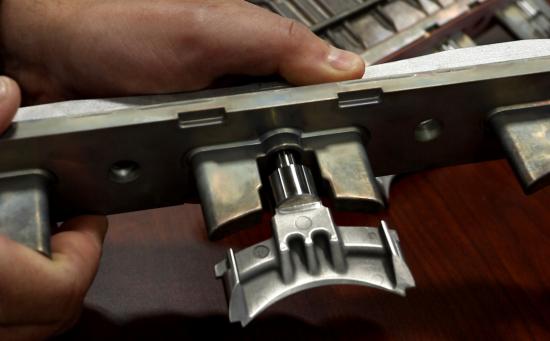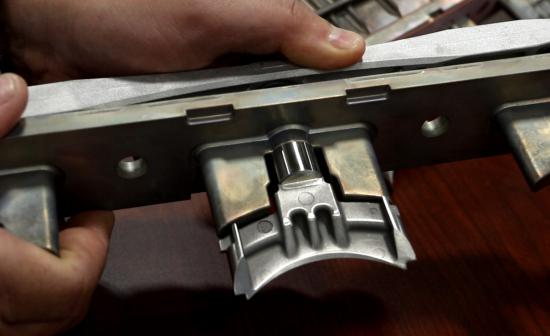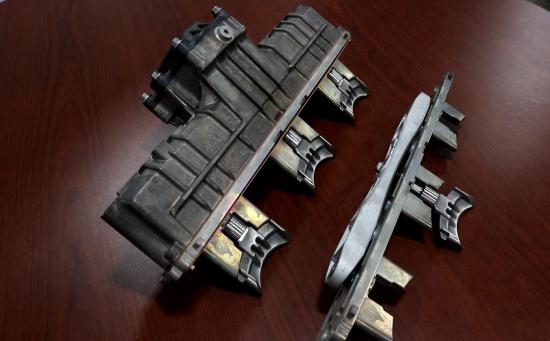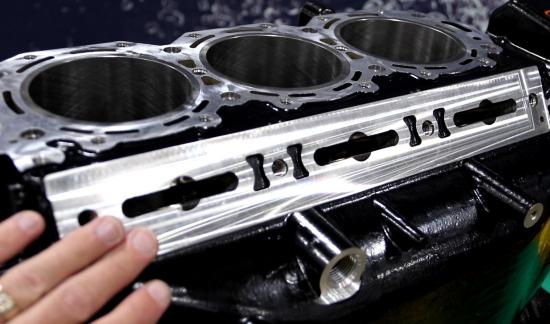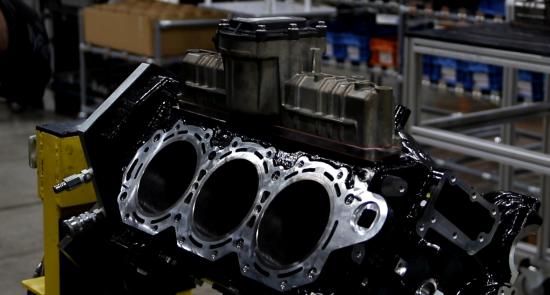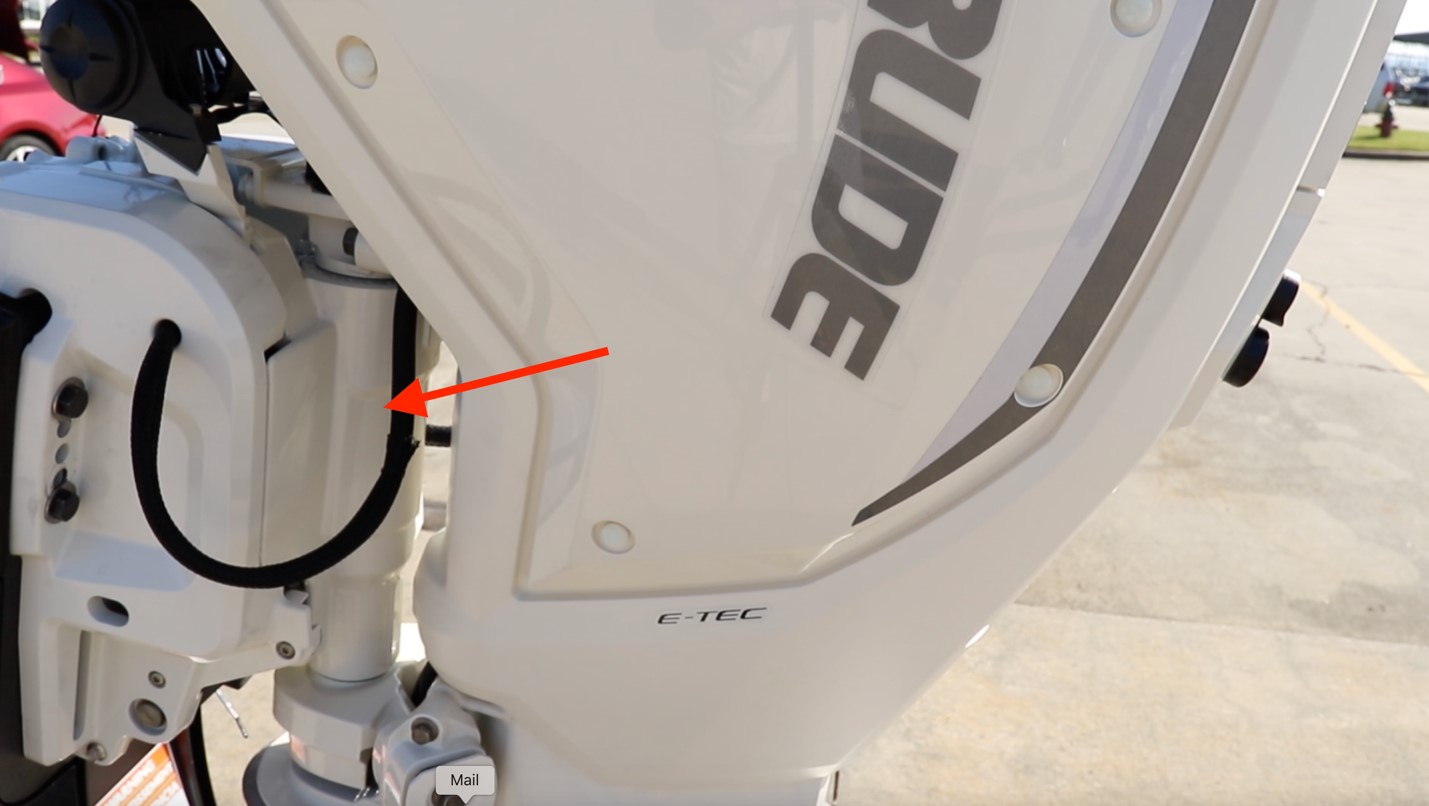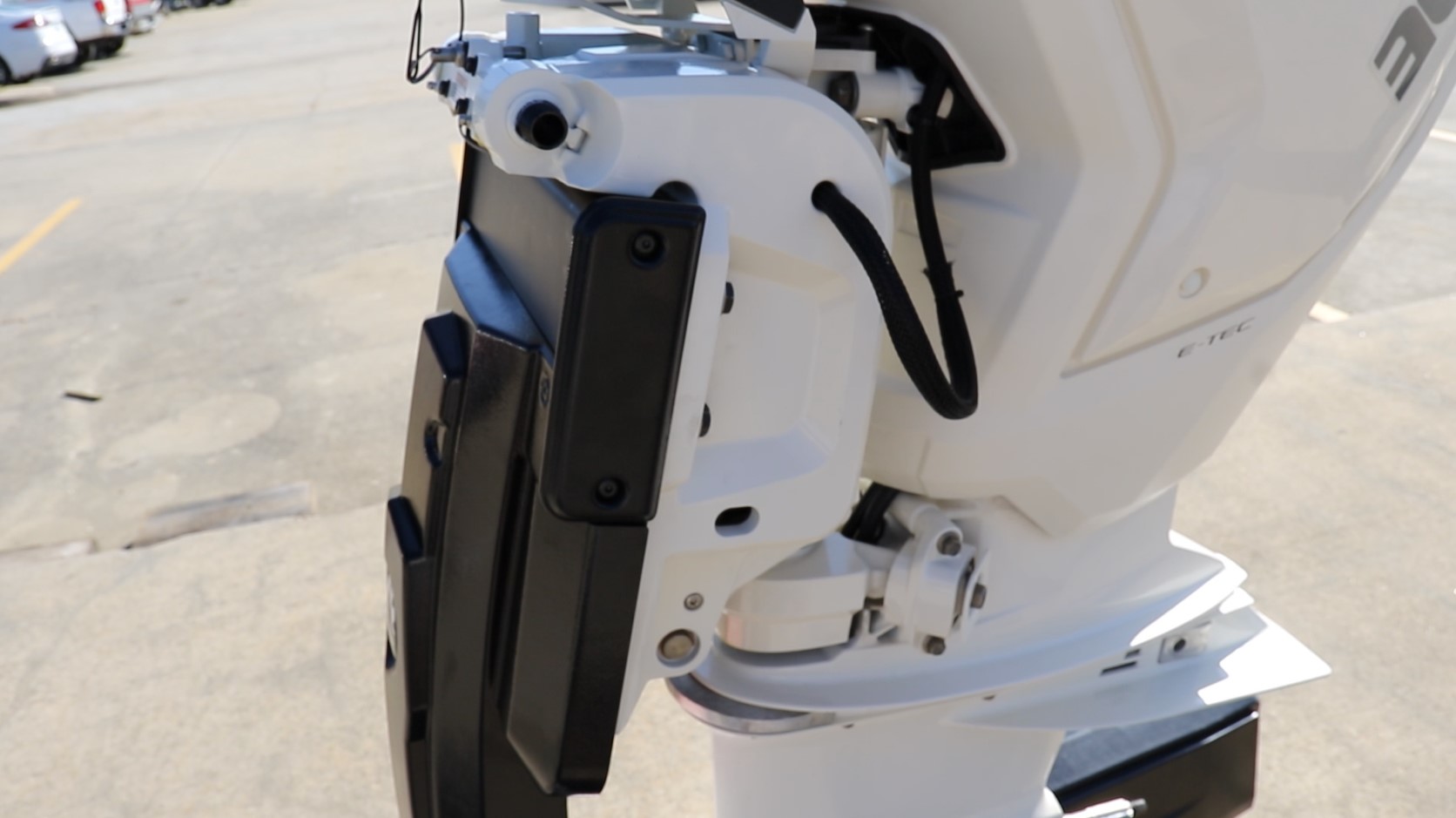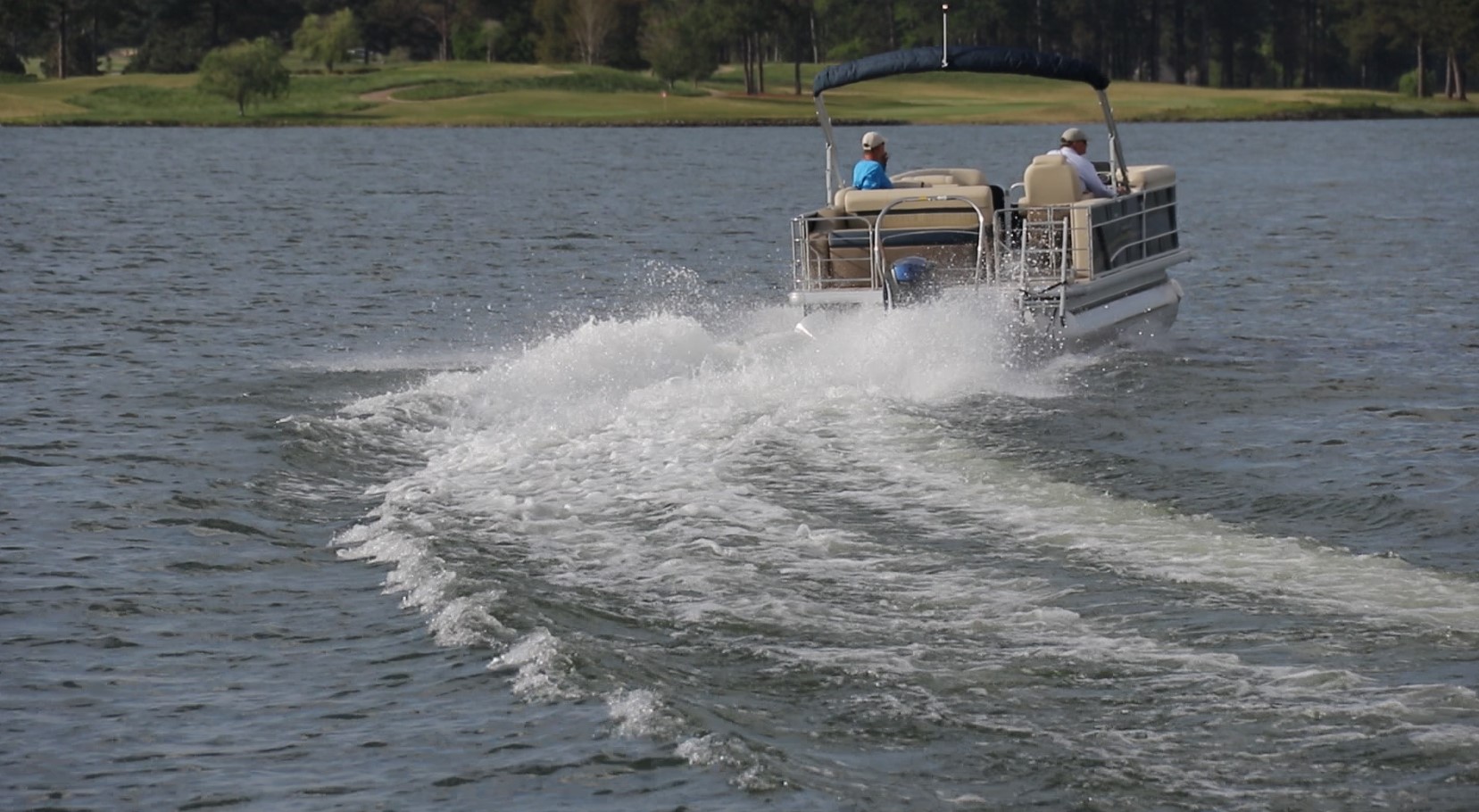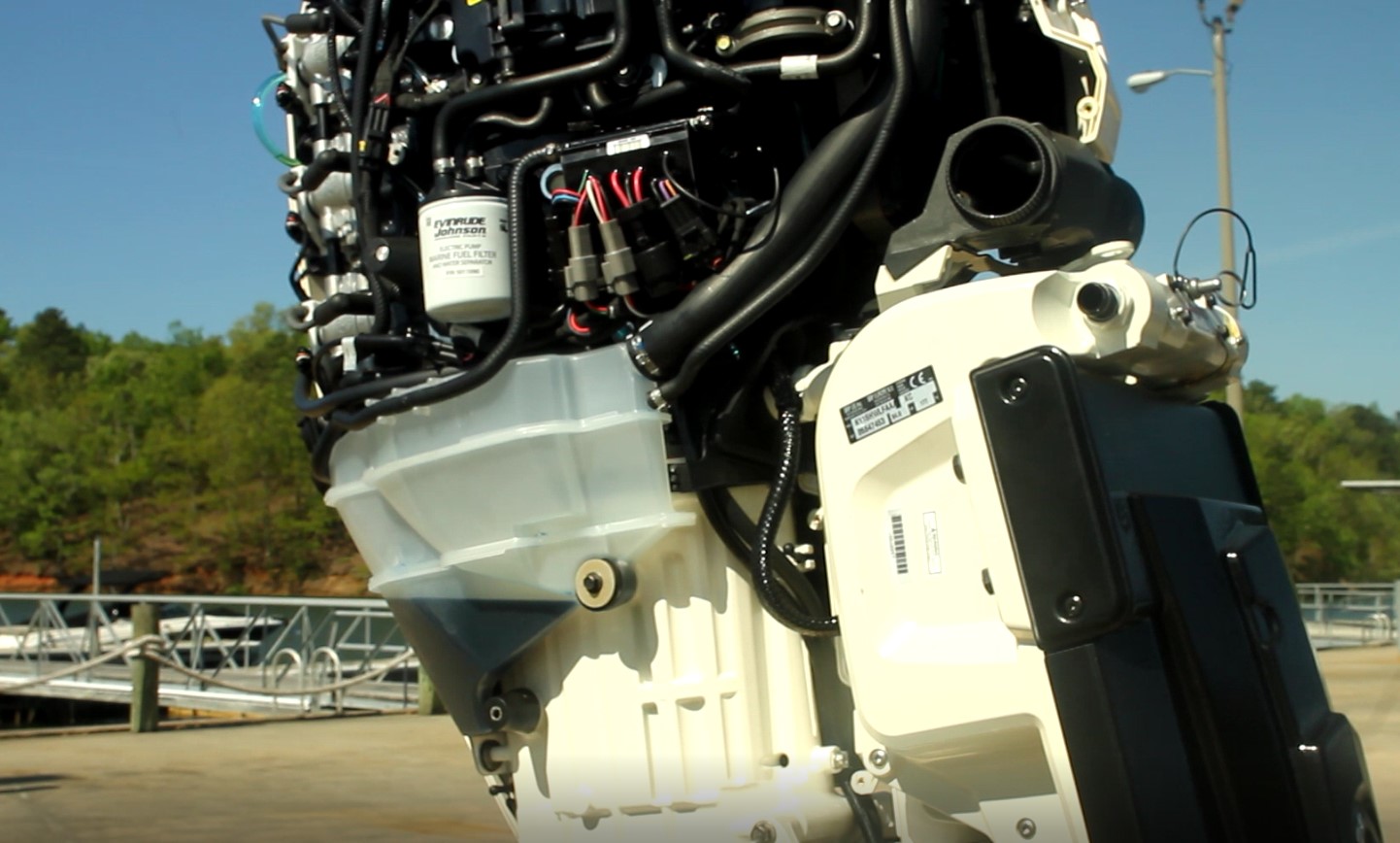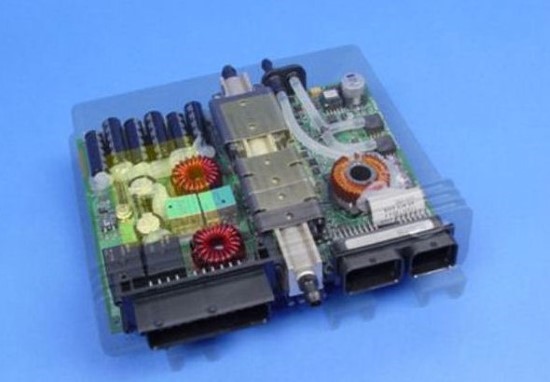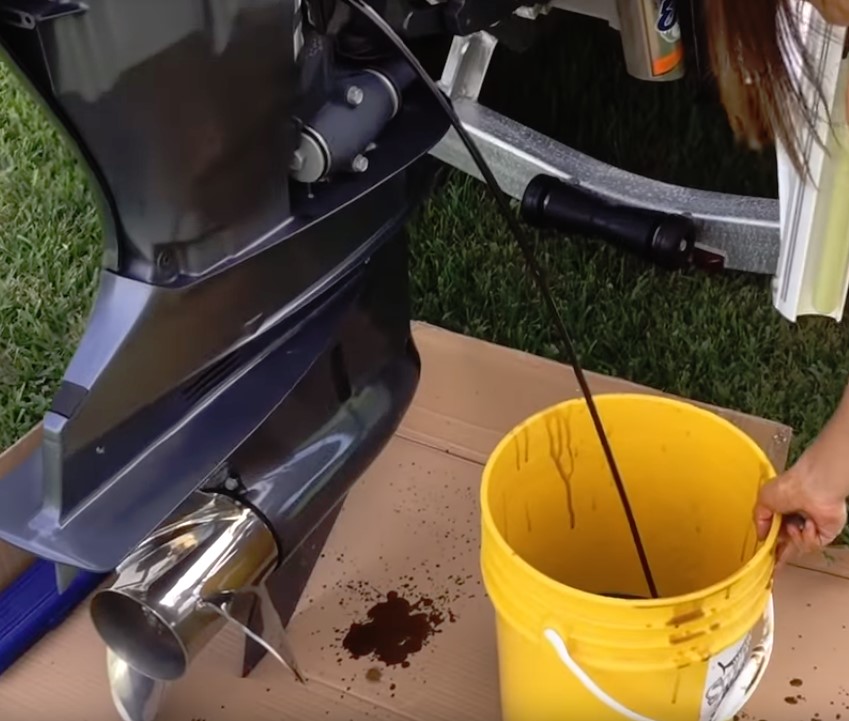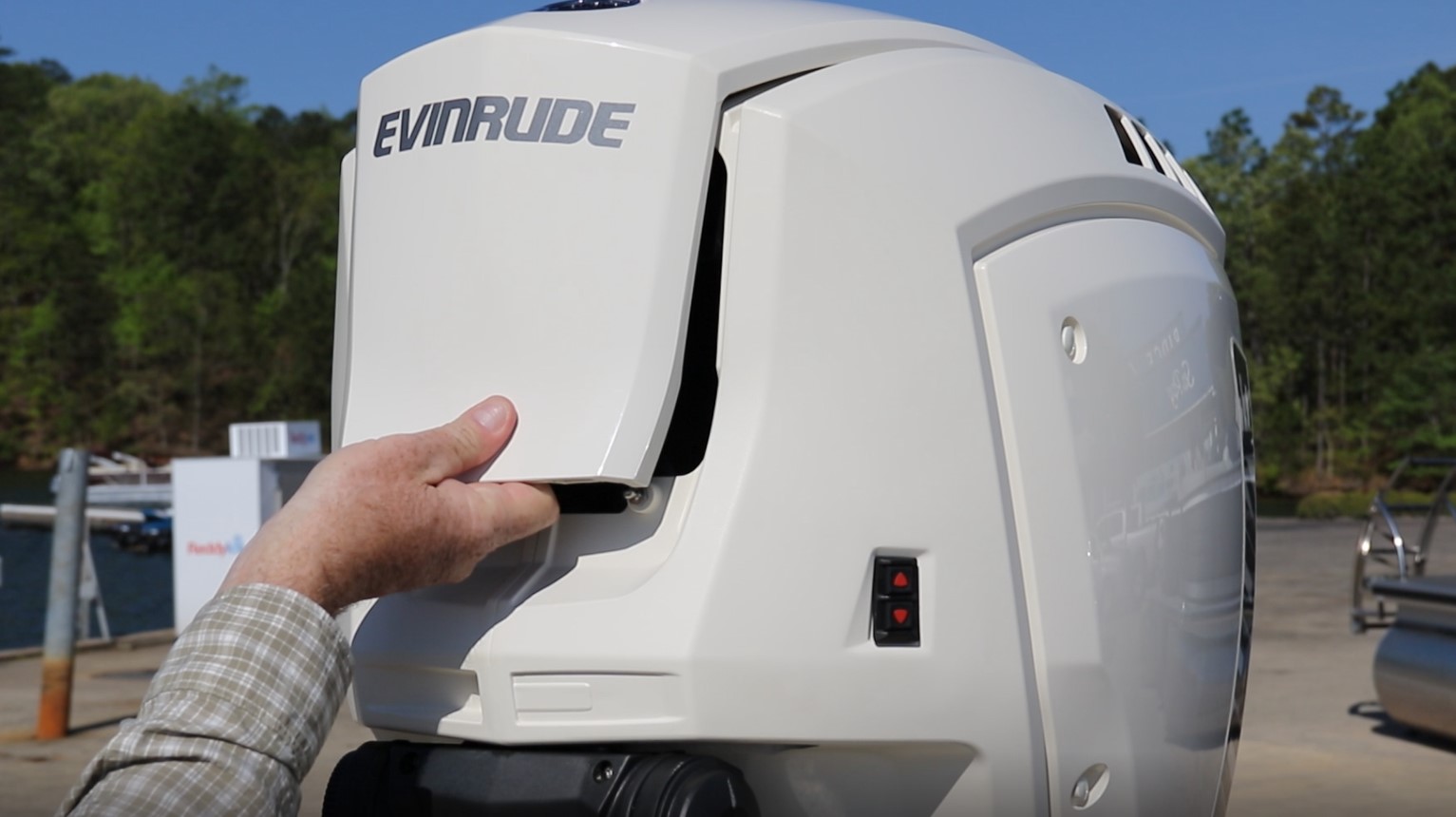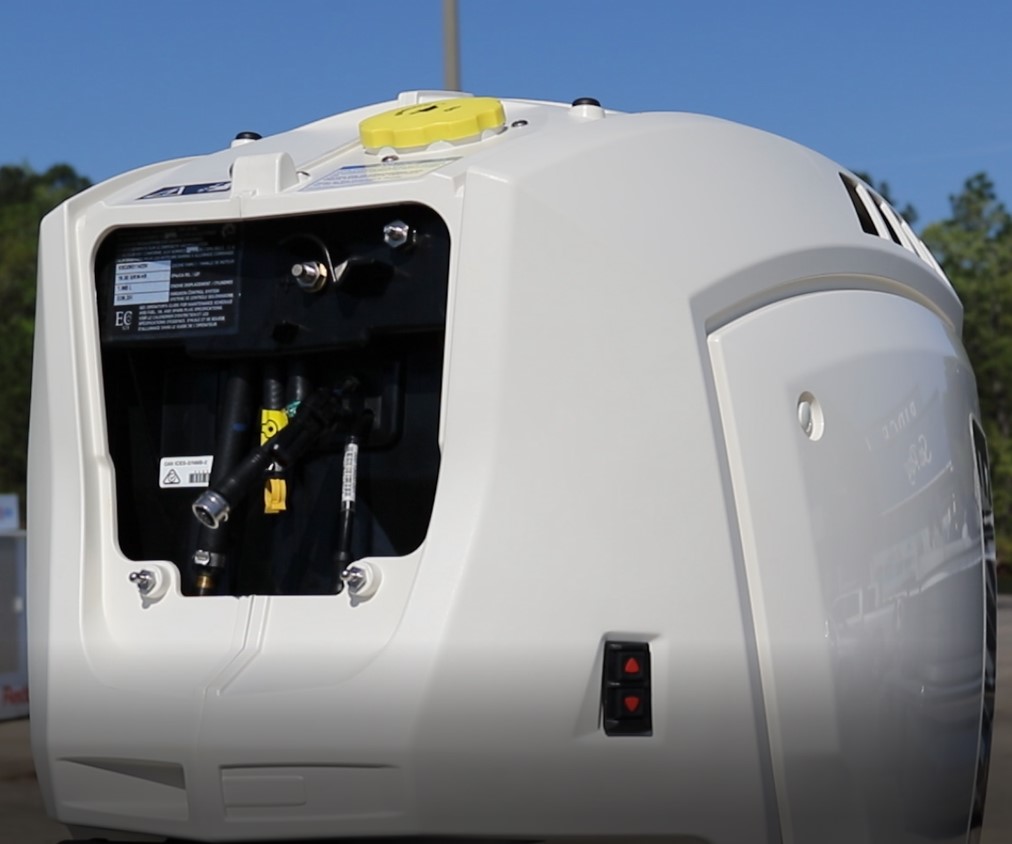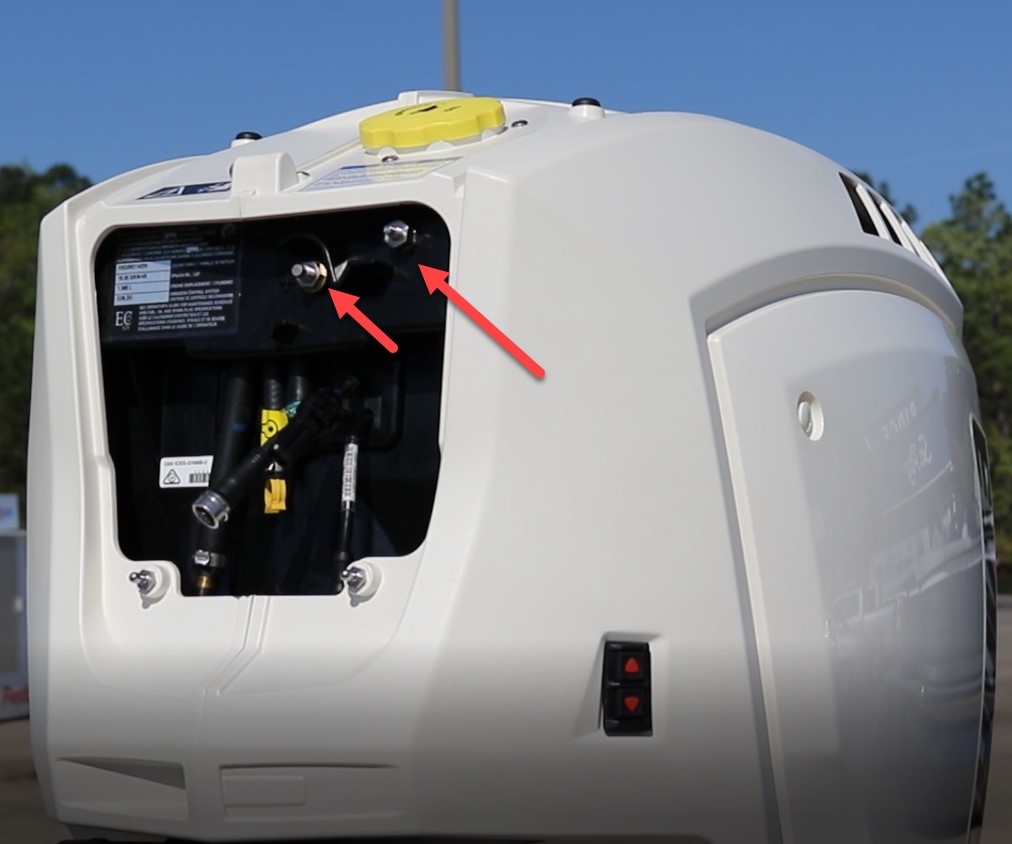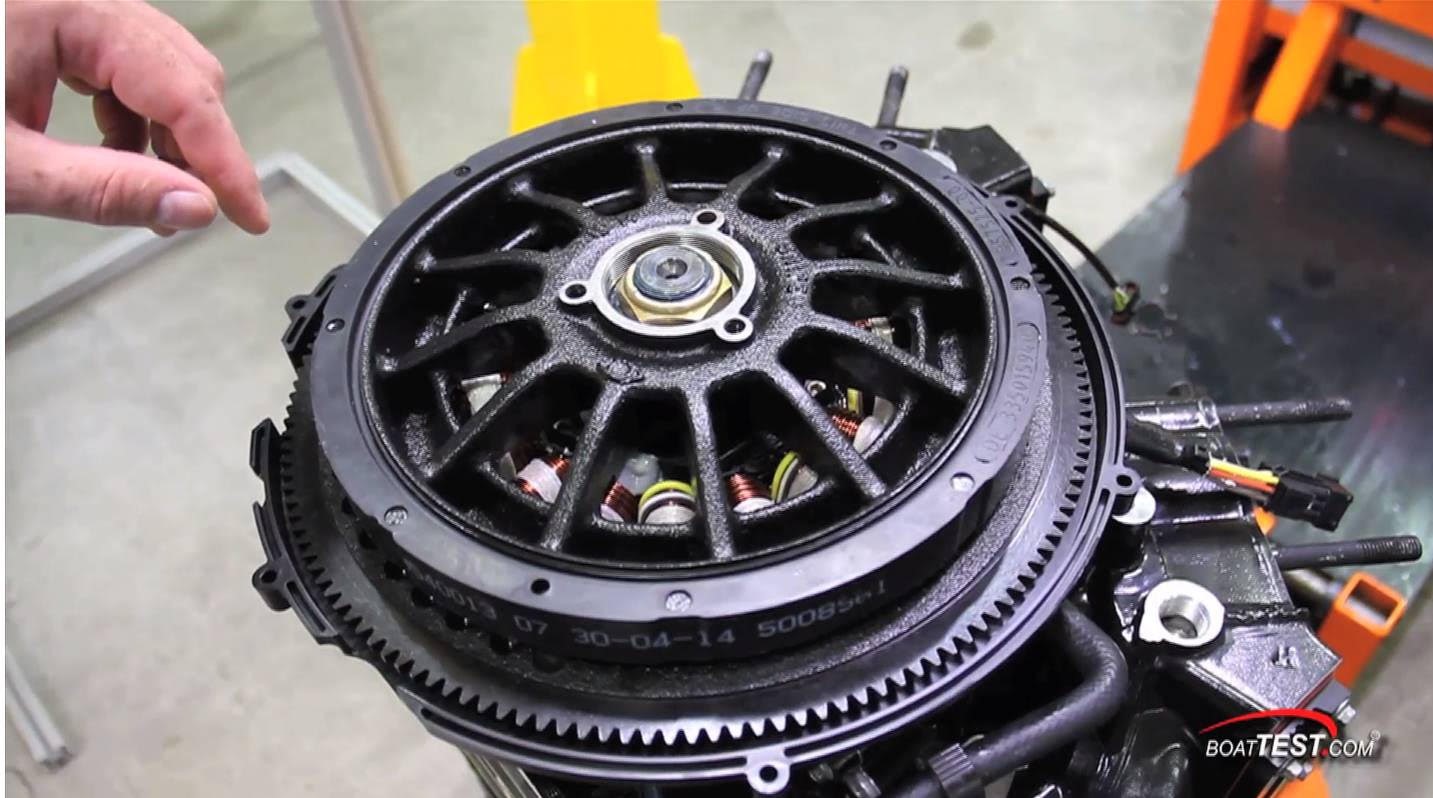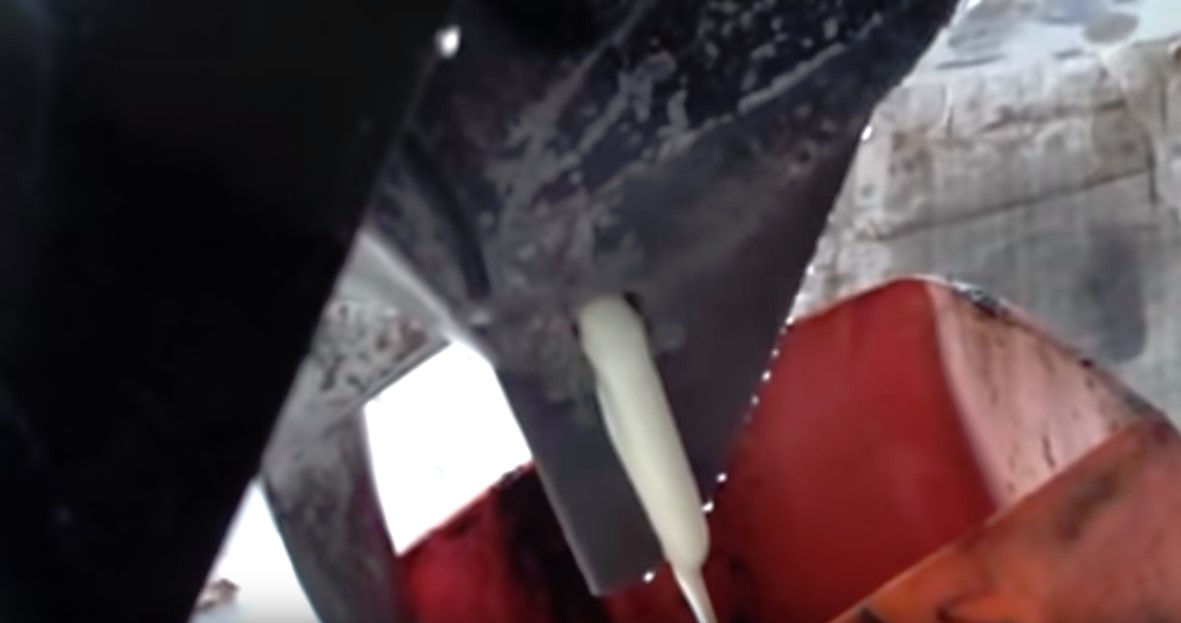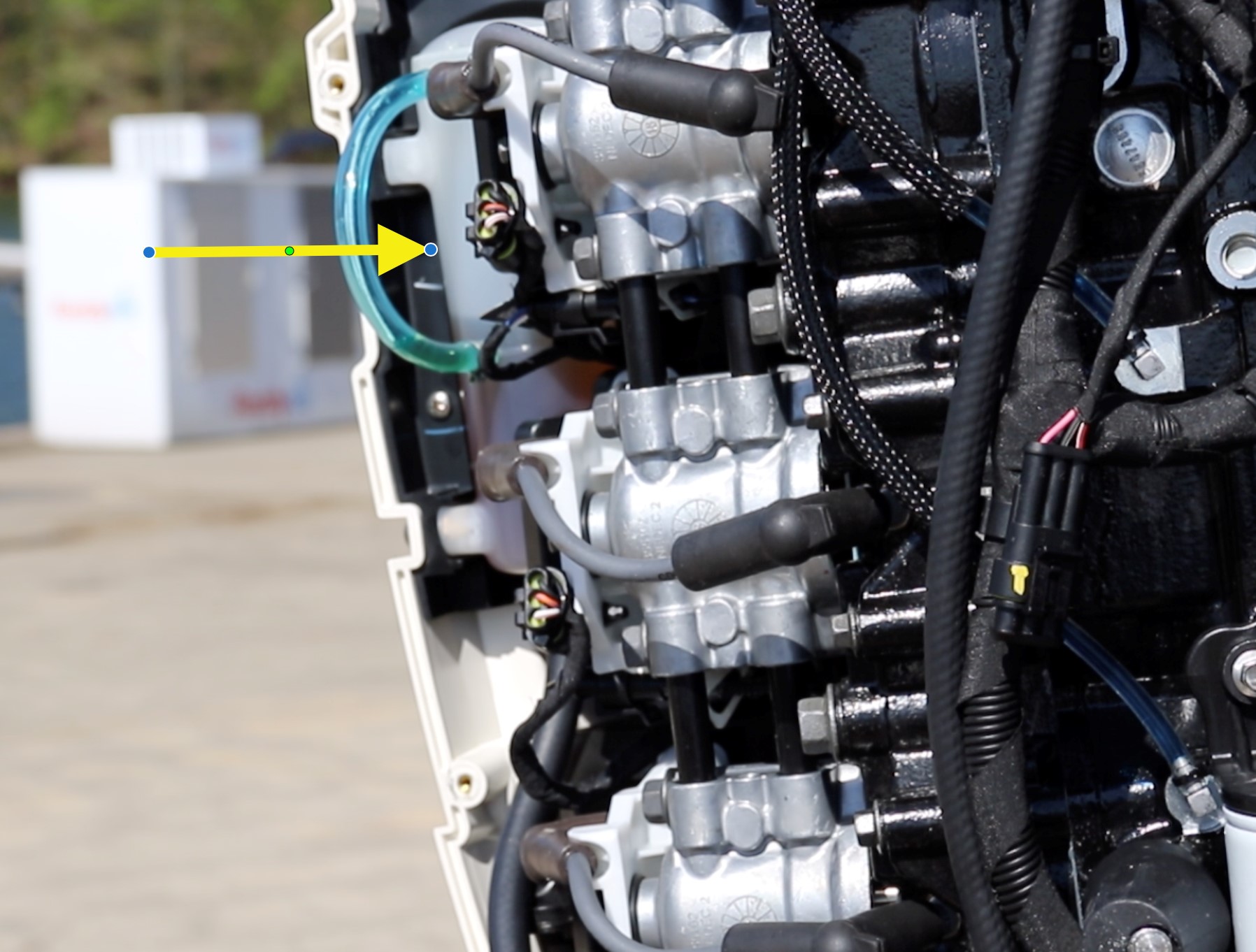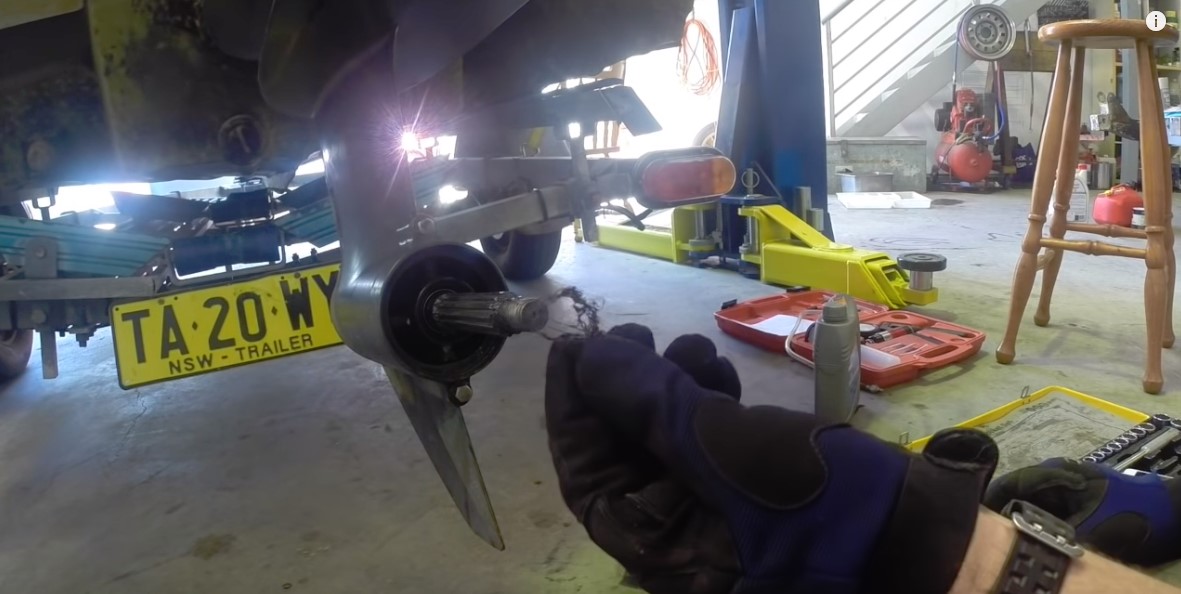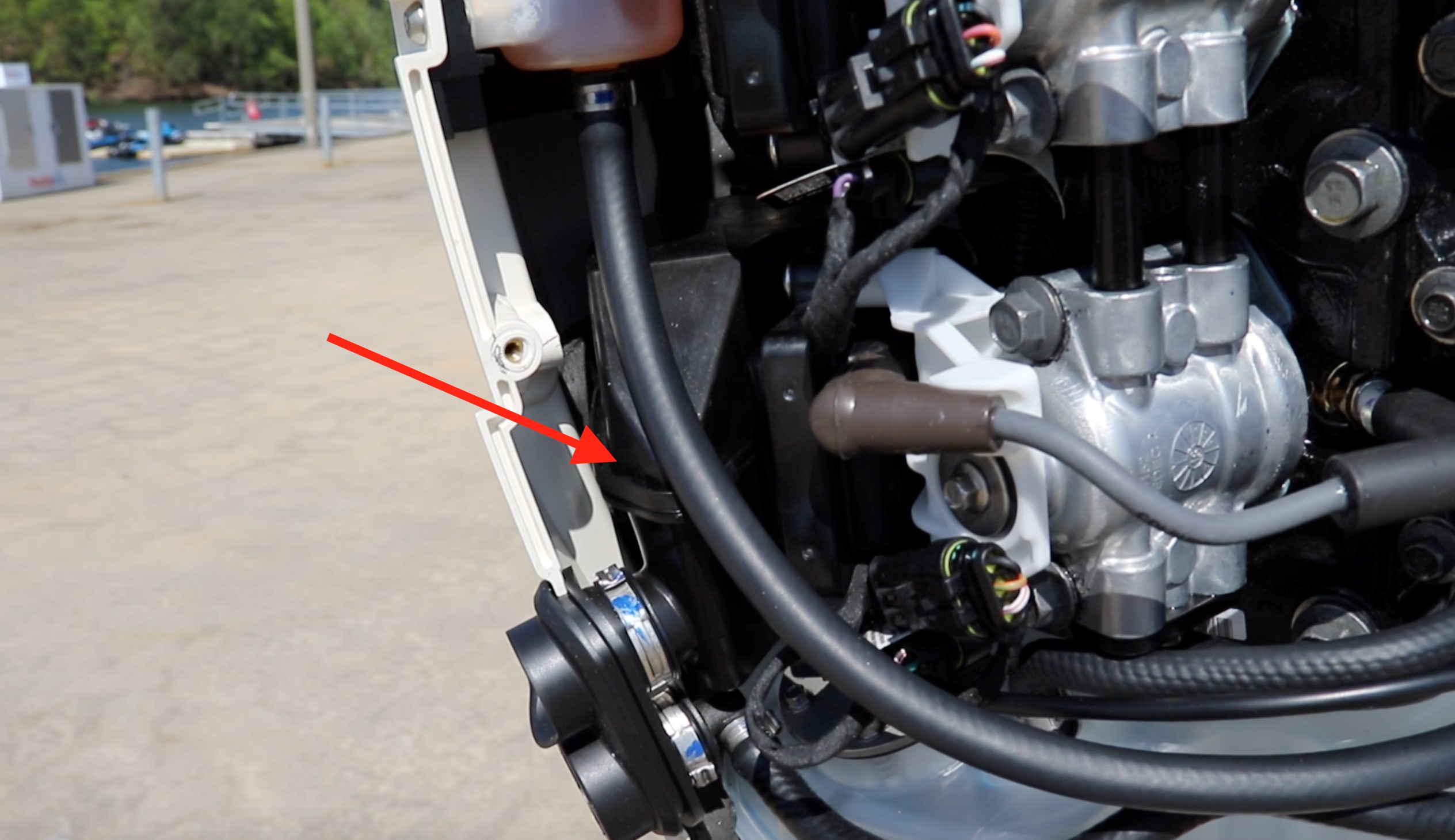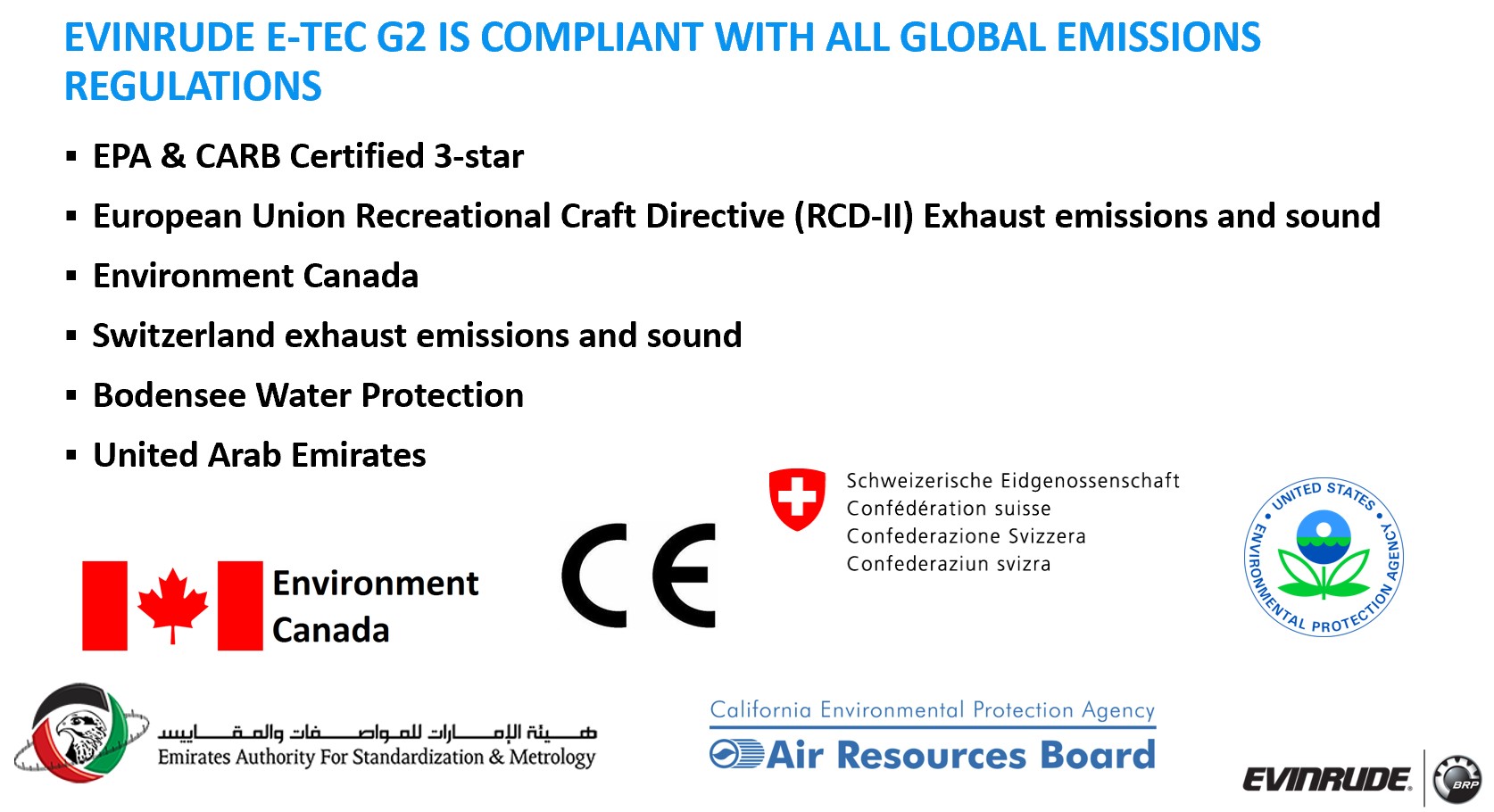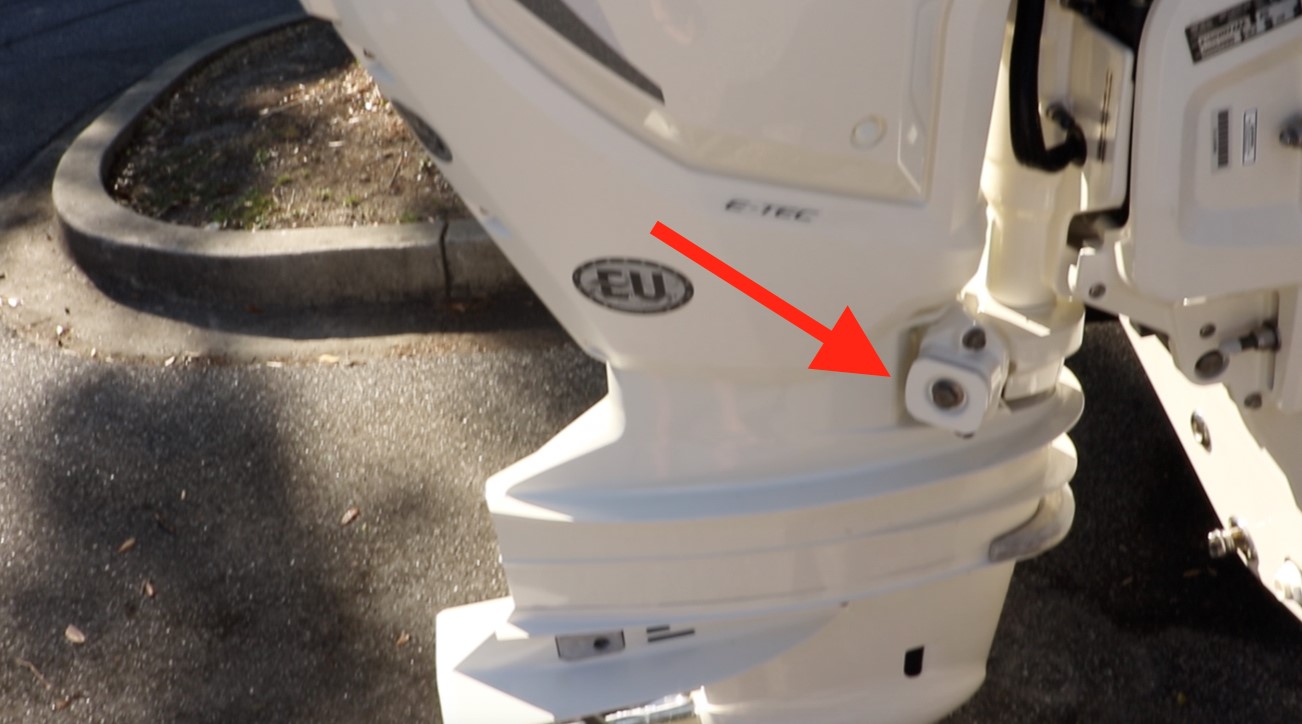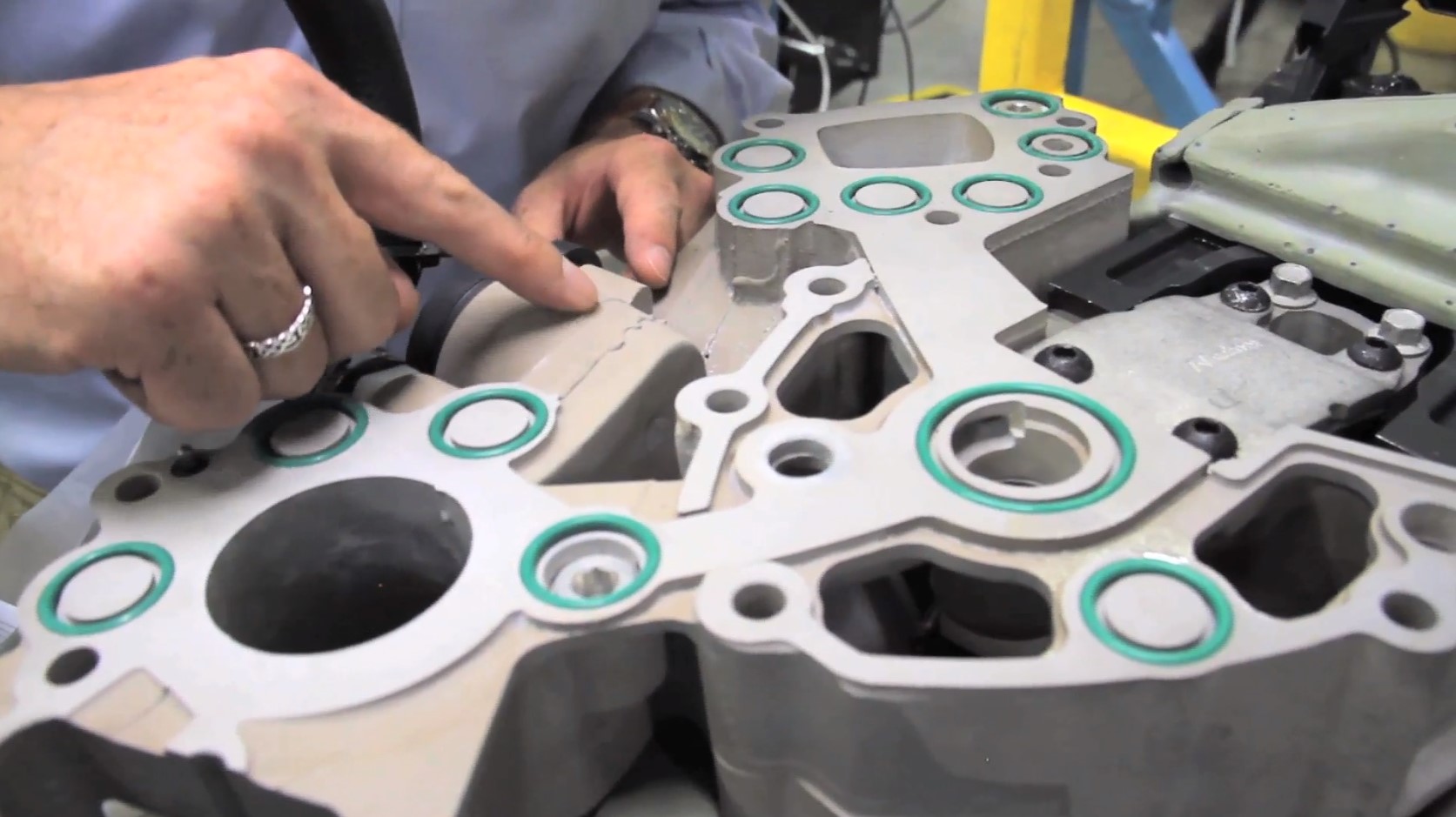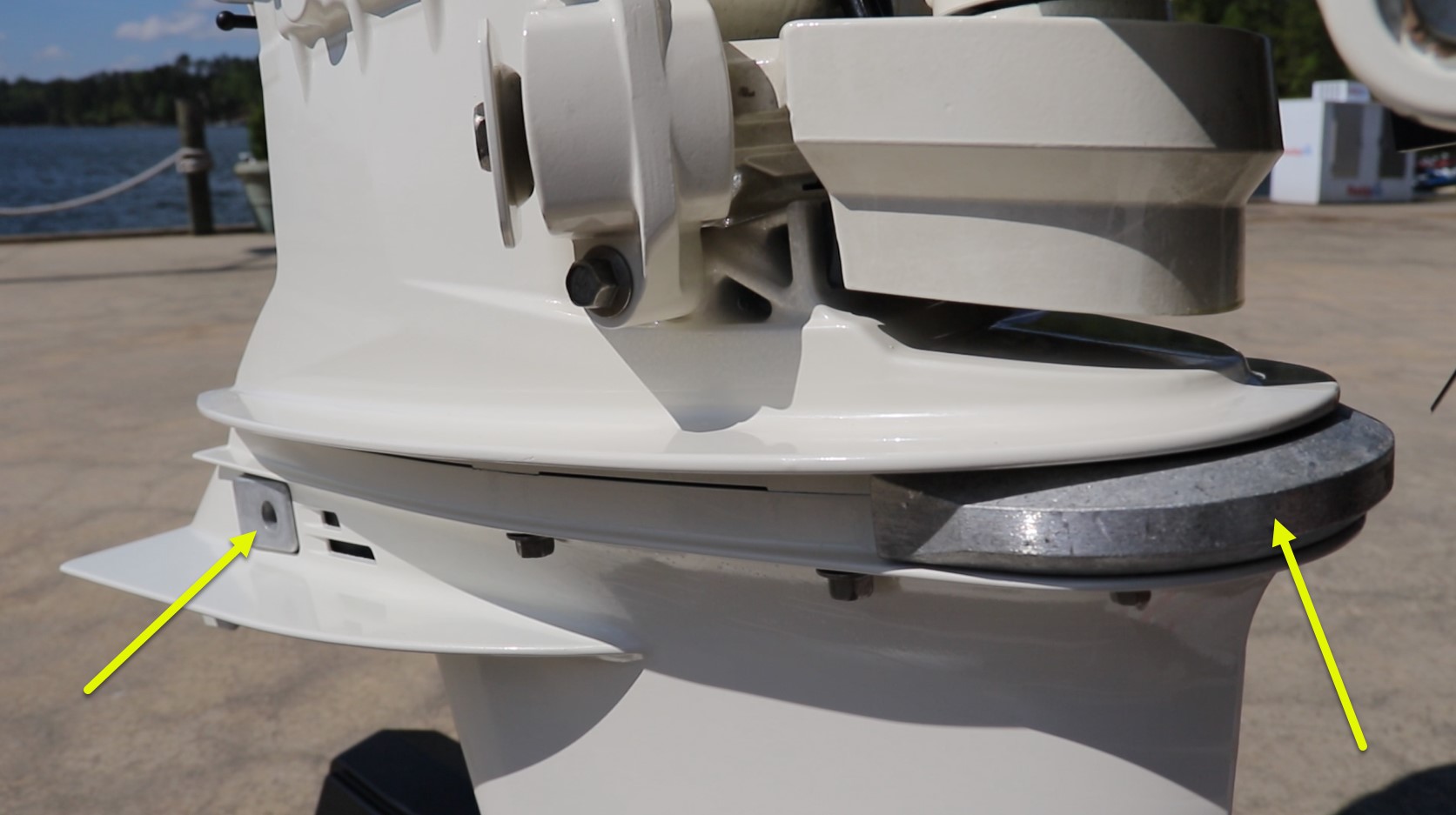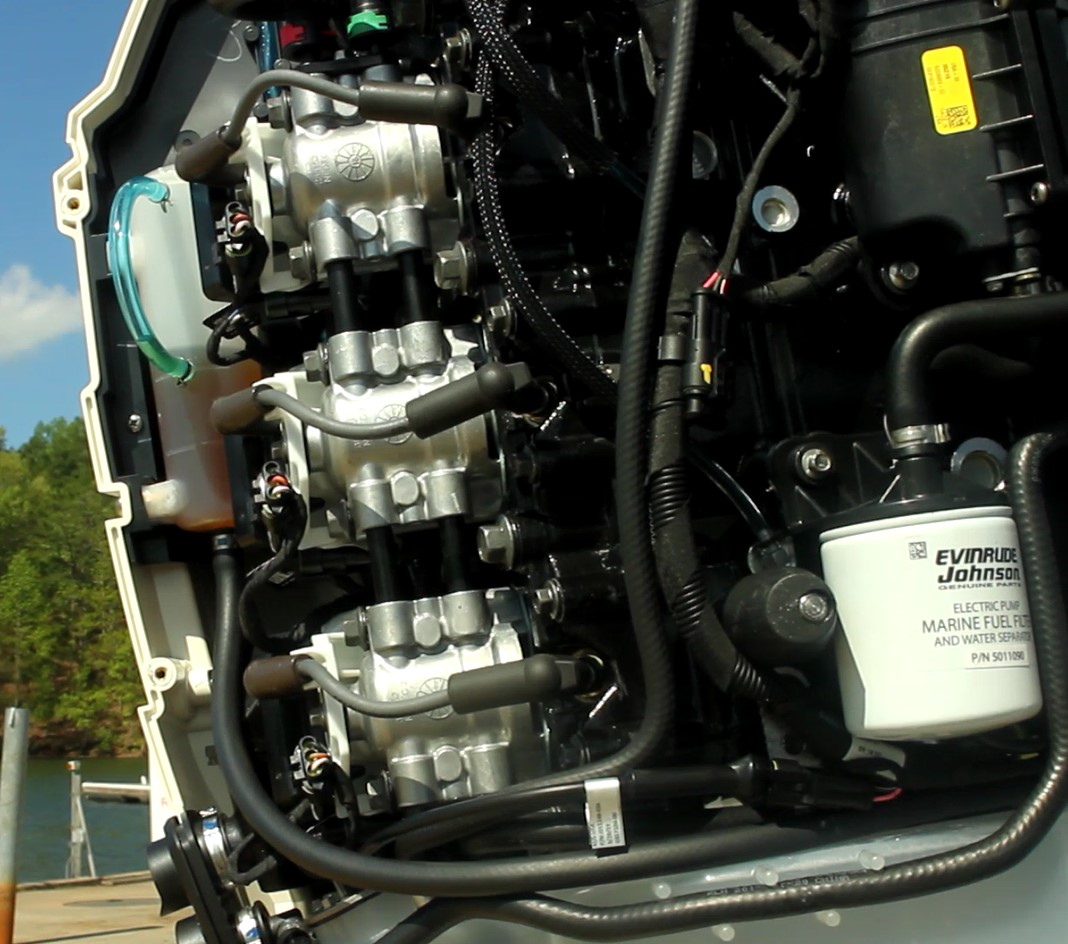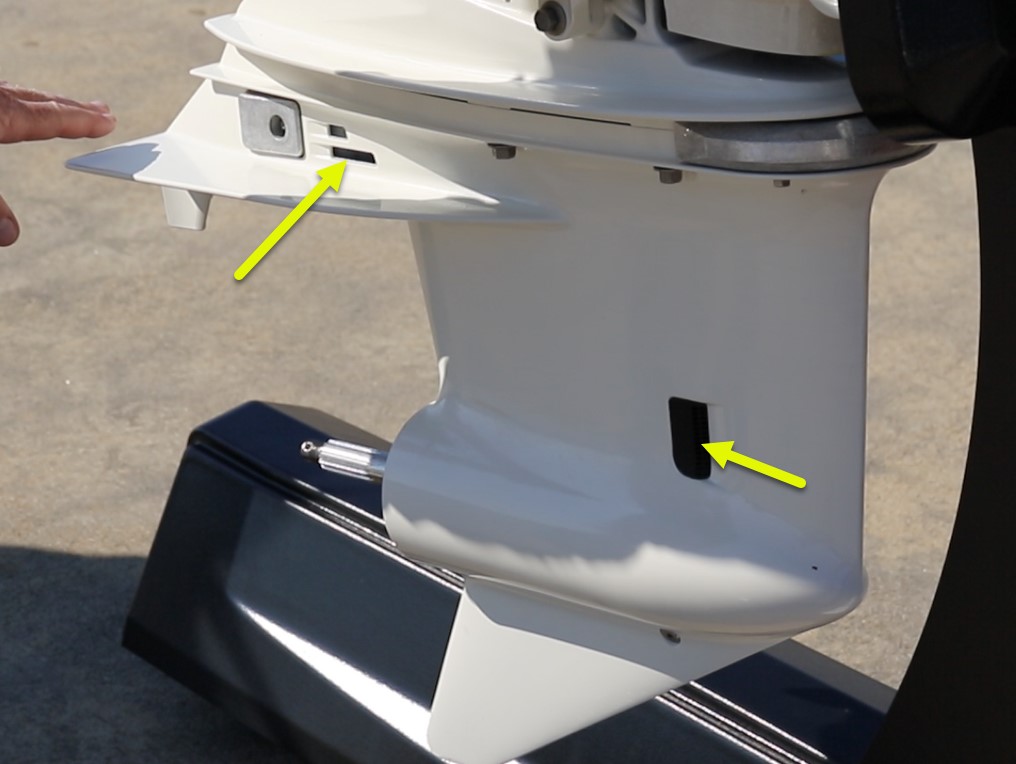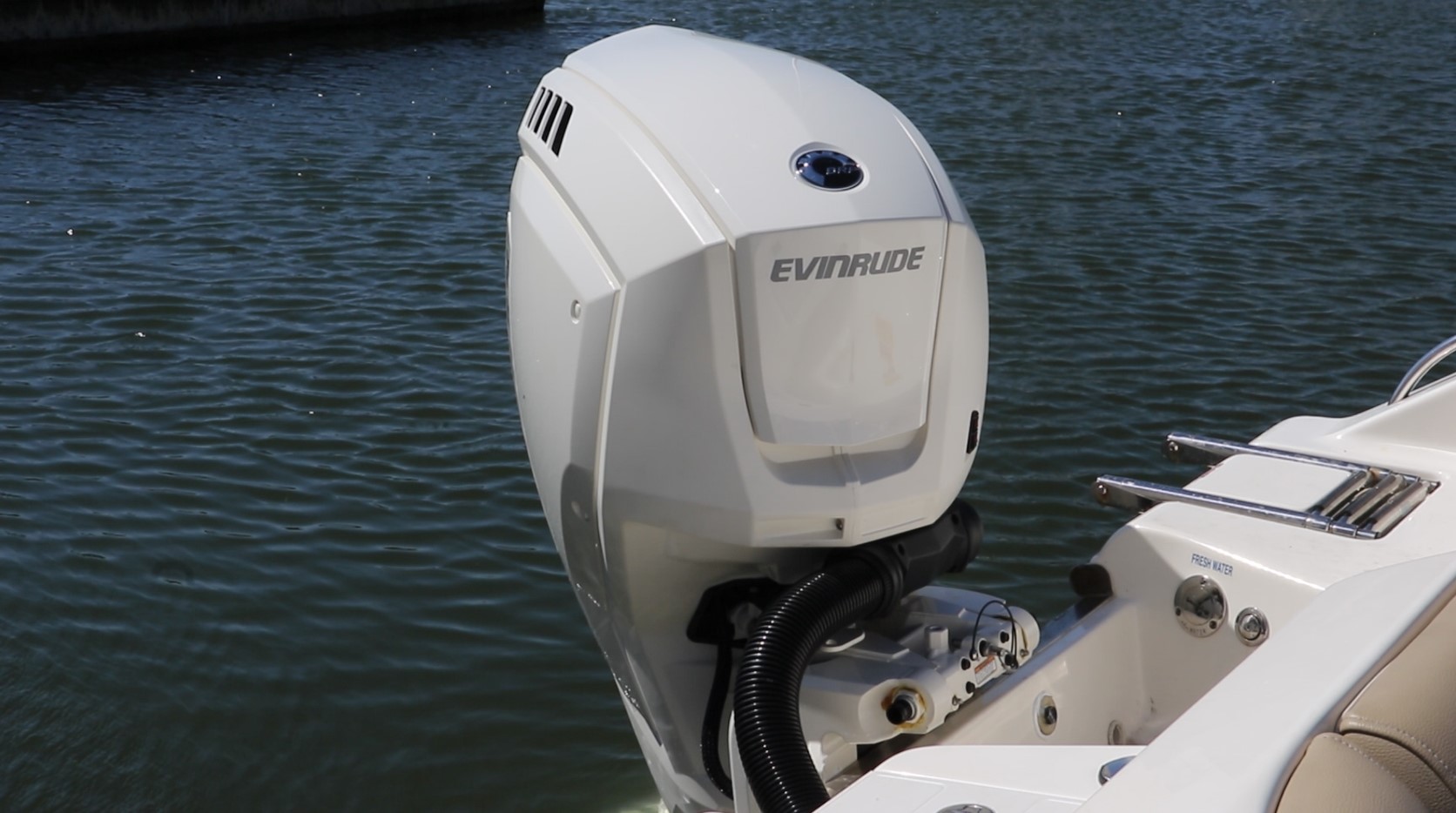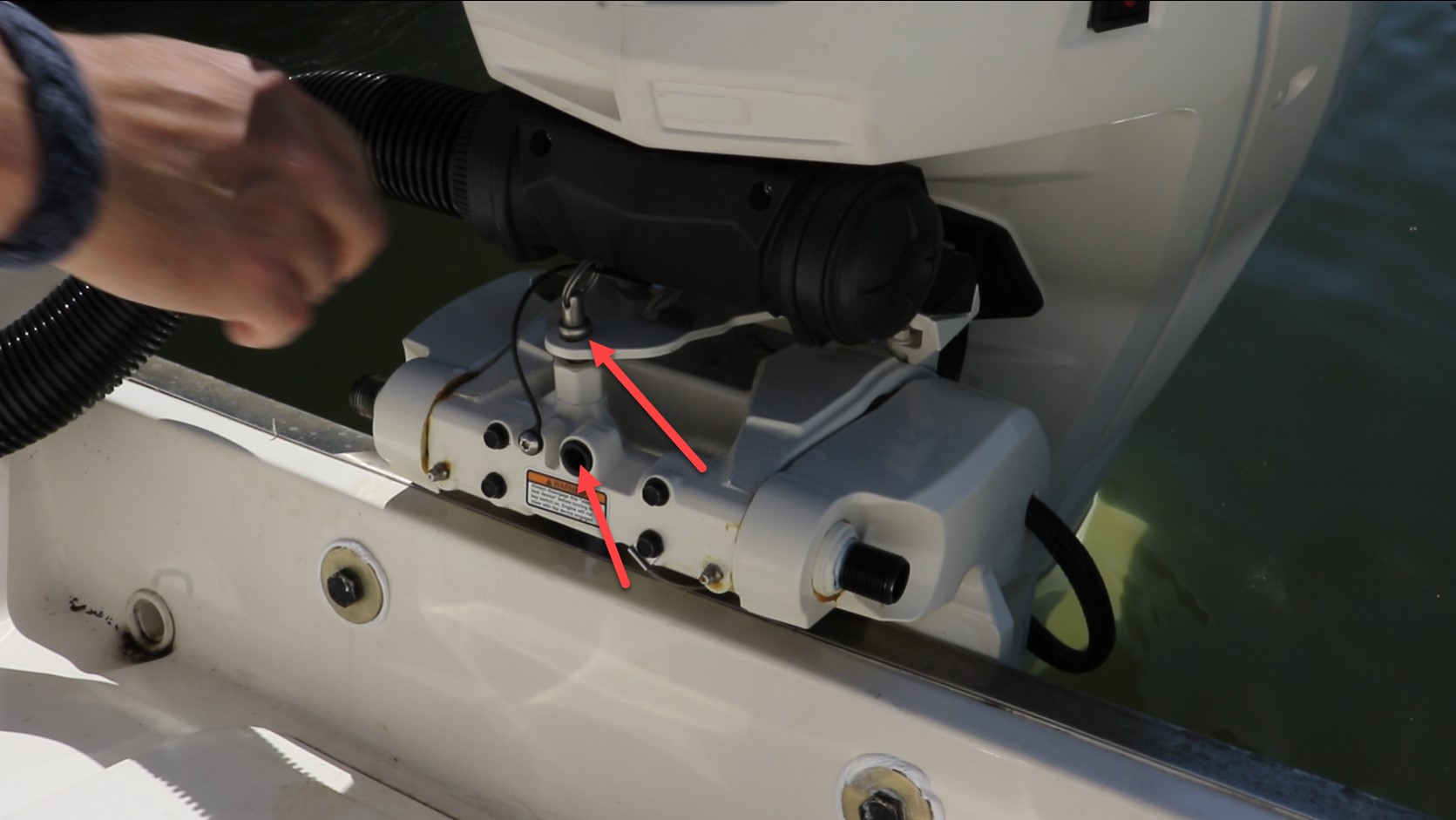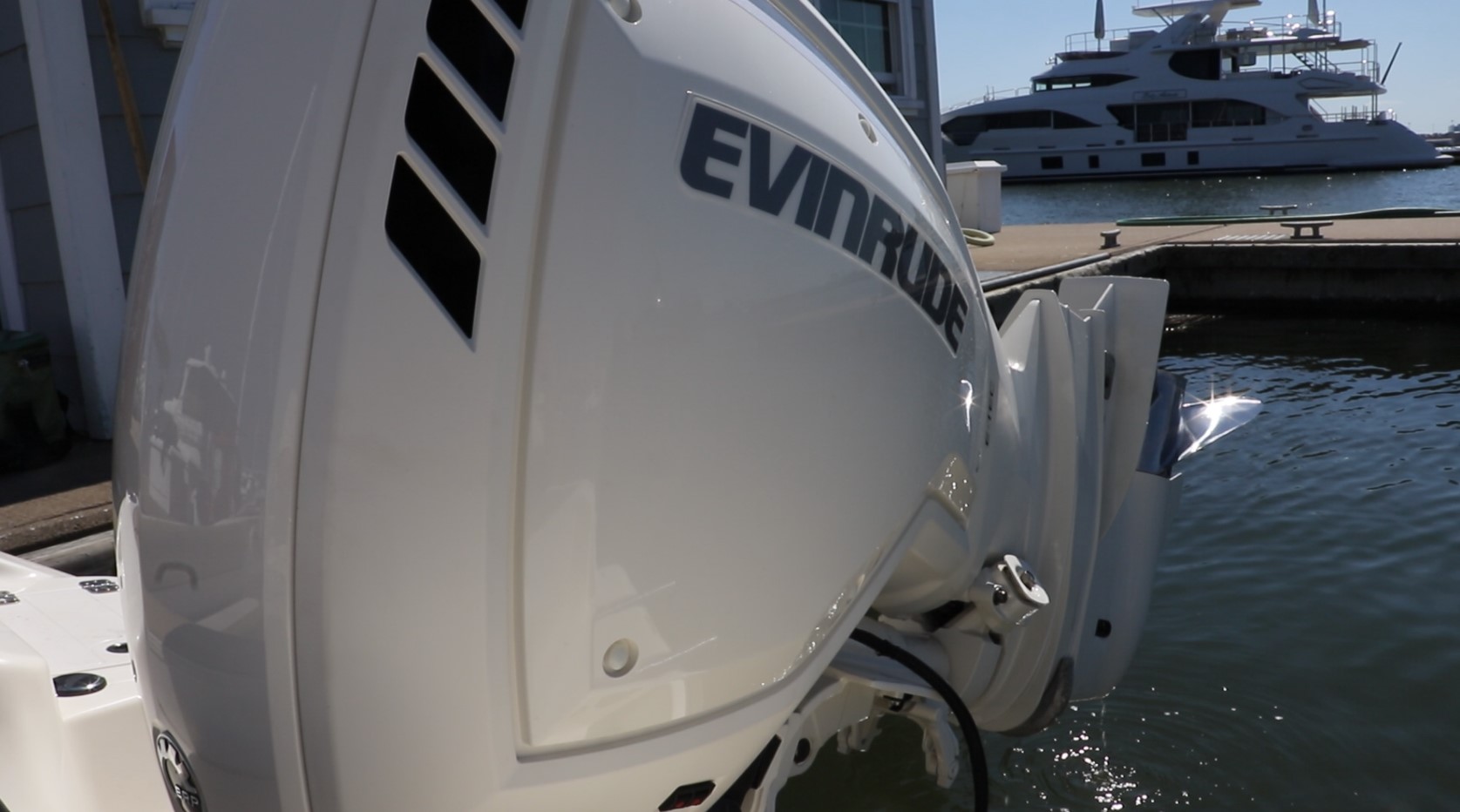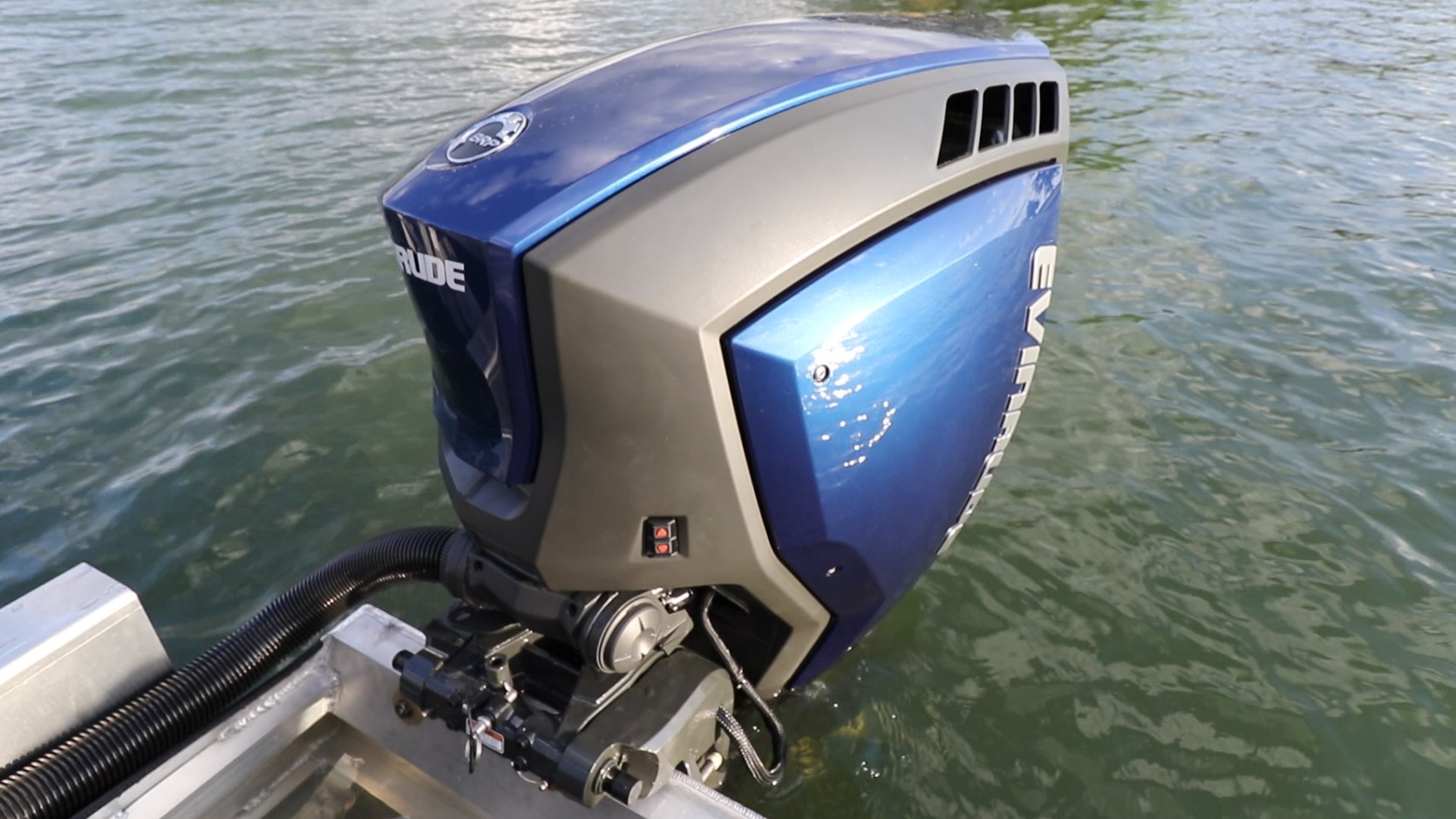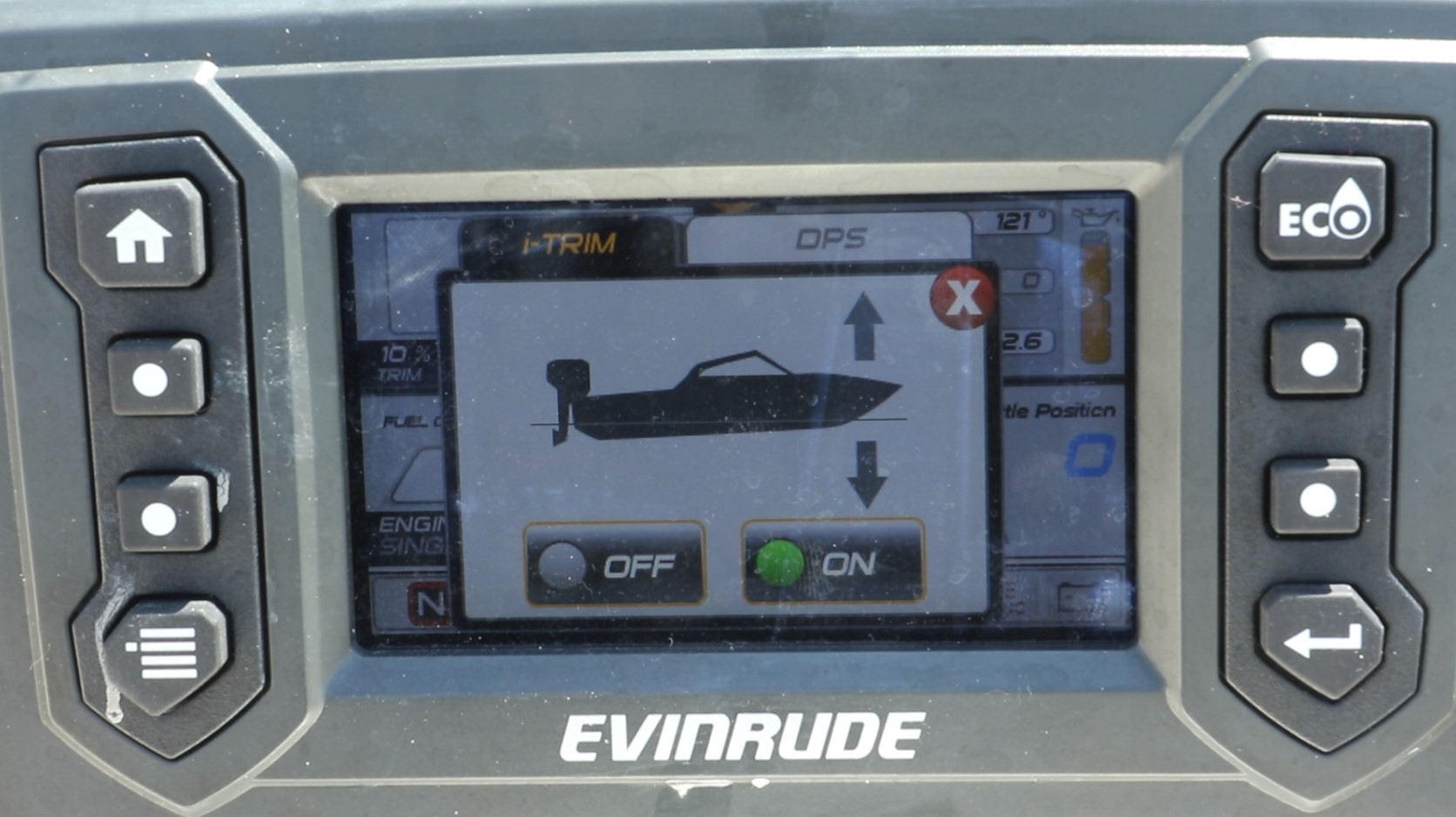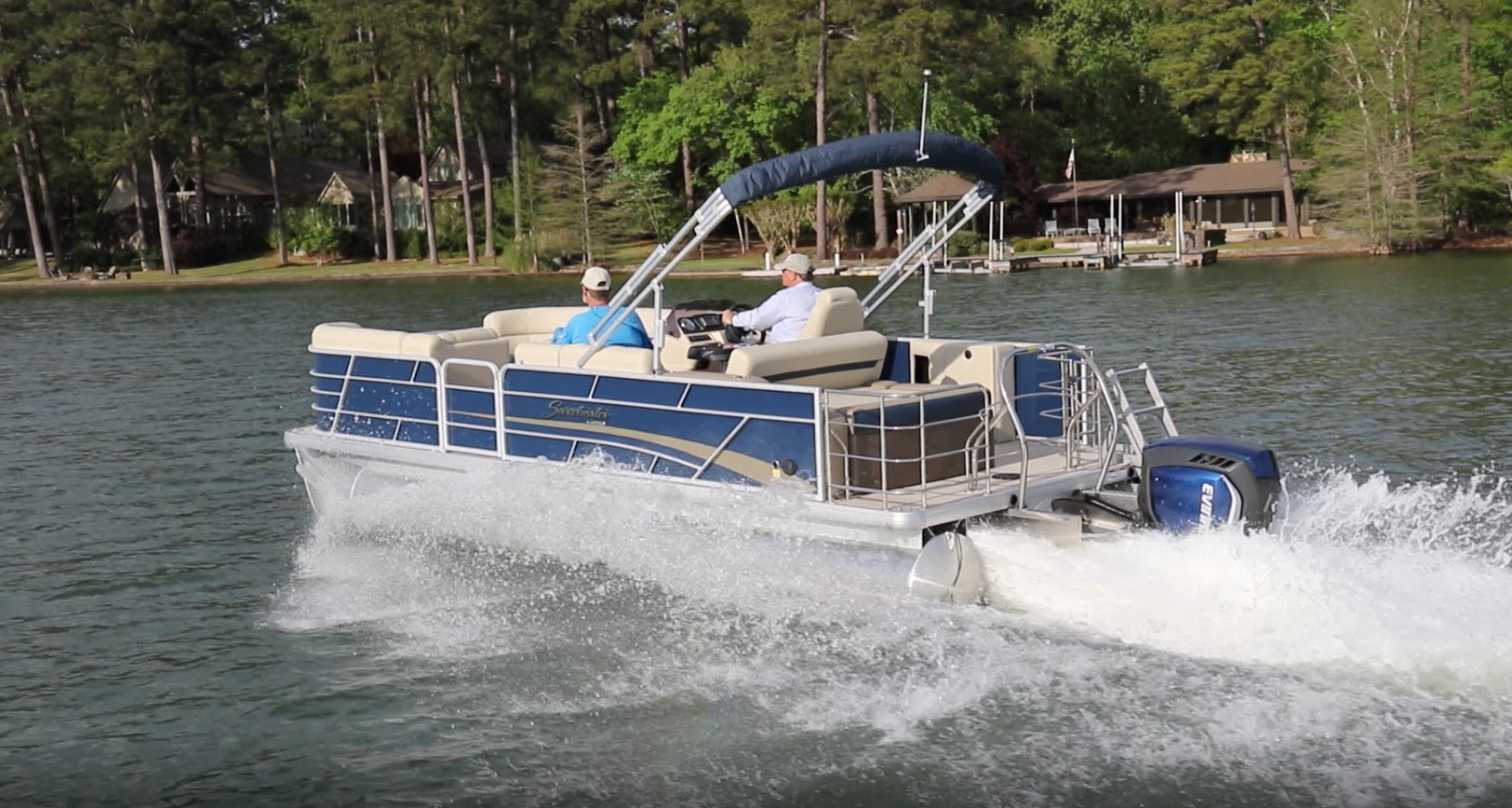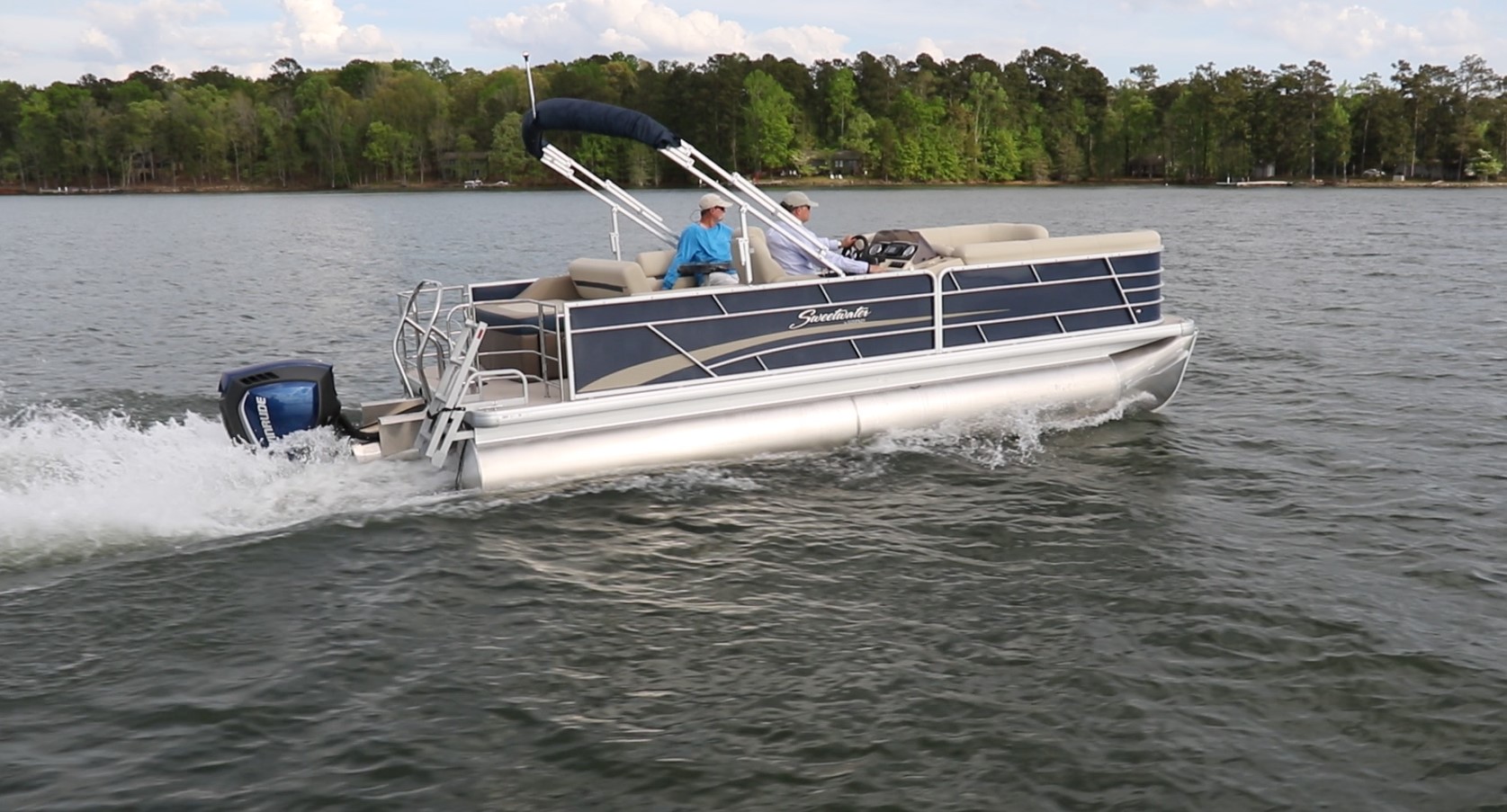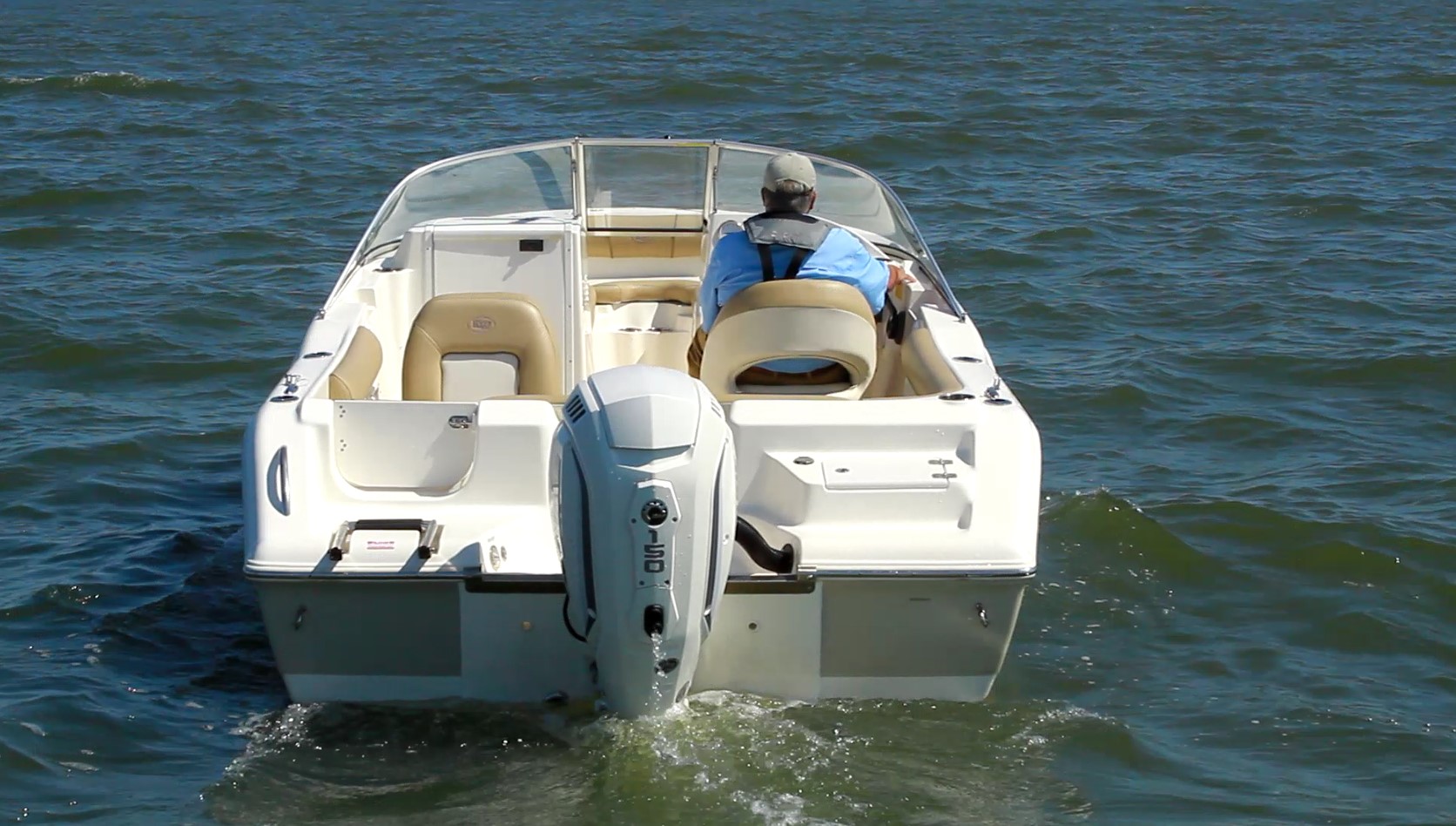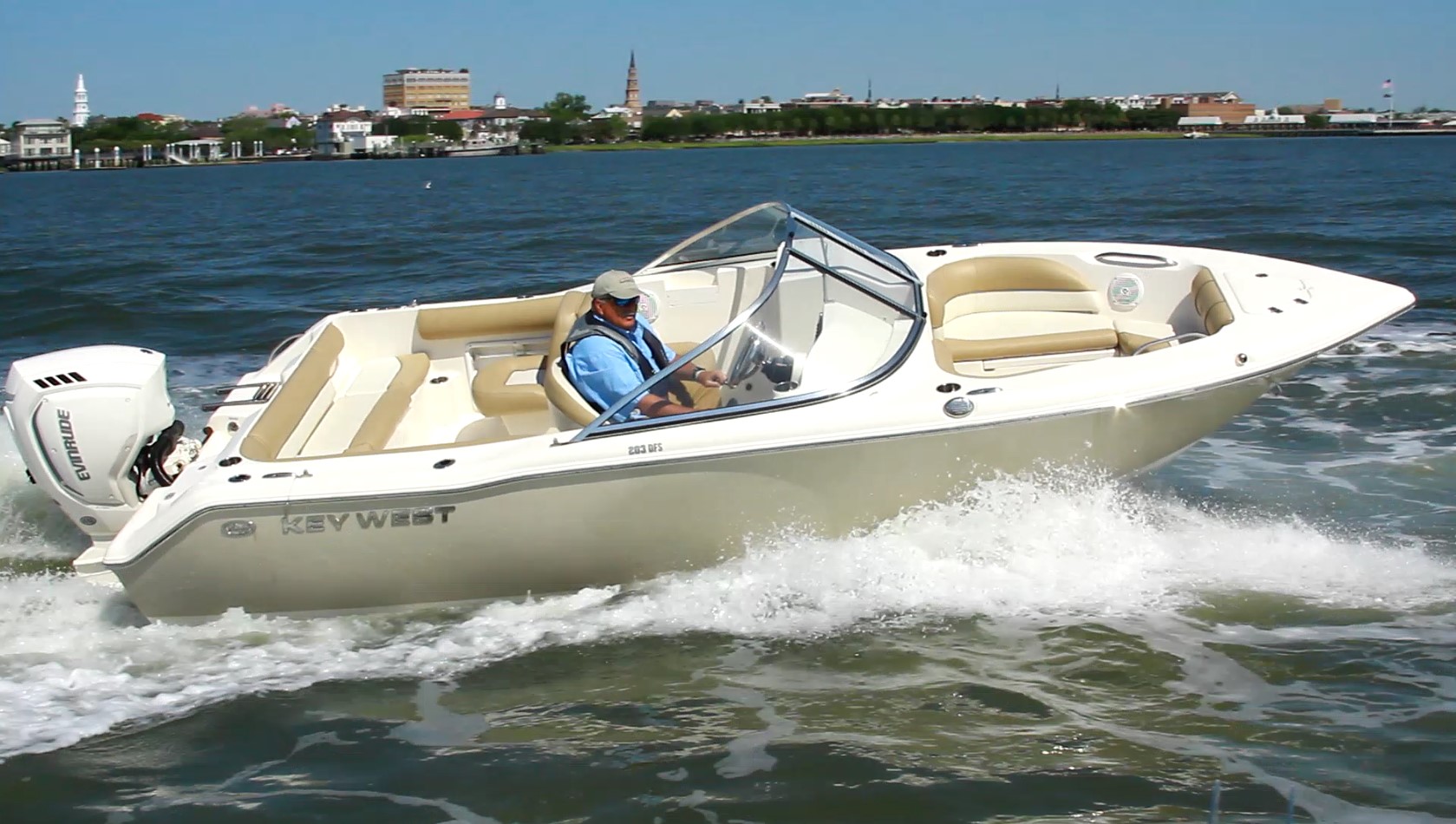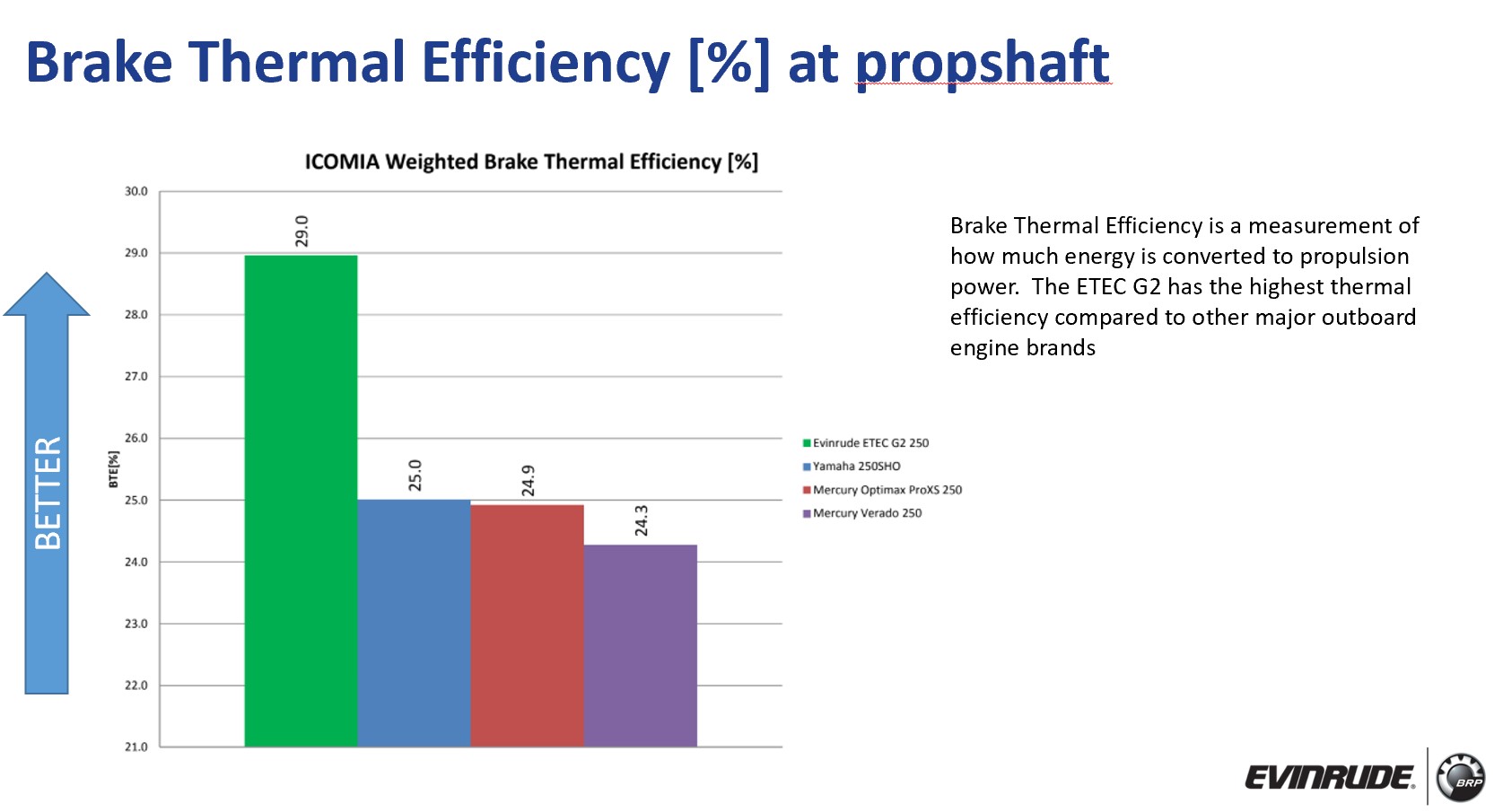Brief Summary
Evinrude’s all-new E-TEC G2 150 HP outboard is a 1.9-liter, 2-stroke engine with 3-cylinders. It incorporates virtually all of the driver-centric features of the 6-cylinder G2s that have been on the market for several years.
Most important, it is more fuel-efficient than any competitive 4-stroke on the market. It is also the quietest engine we have tested at best cruise in its class. This is a noteworthy finding because historically 2-stroke engines were generally thought to be louder than 4-stroke engines. Evinrude techs tell us that the new G2 platform has produced more torque than its competition, something that bass boaters and boarders care about. The engine has a 5-year non-declining warranty as well as a 5-year anti-corrosion warranty.
Key Features
Specifications
| Type of Engine | 2-Stroke |
|---|---|
| Number of Cylinders | 3 |
| Horse Power | 150 |
| Configuration | |
| Weight | 397.00lbs |
| Fuel Type | Gasoline |
| Fuel Delivery | |
| Shaft Length Options | |
| Shift Throttle Control | |
| Displacement | |
| Steering Control | |
| Recommended Fuel | |
| Alternator Output | |
| CARB Rating | 3-Star |
| Engine Monitoring System |
Captain's Report
Contents of Report
- Key “Performance” Features of the Evinrude E-TEC G2 150 HP
- Mission
- Distinguishing “Mechanical” Features
- Distinguishing “Operational” Features
- Distinguishing “Build” Features
- Design
- Direct In-The Cylinder Fuel Injection
- Stratified Combustion
- Dynamic Internal Power Steering
- Magneto Electrical Charging System
- Gear Lube System
- RAVE Exhaust
- Anti-Vibration Measures
- Noise Attenuation
- Corrosion Resistant
- Regular Gas
- Redesigned Lower Unit
- iTrim
- Weight Comparison
- Performance Testing a Pontoon Boat
- Performance Testing a Dual Console
- Pricing
- Observations
Key “Performance” Features of the Evinrude E-TEC G2 150 HP
- Better fuel-efficiency than 4-stroke engines
- Cleanest emissions of any 4-stroke engine
- iTrim automatic engine trim standard
- Power trim and tilt standard
- Quieter running at best cruise
Mission
Evinrude’s goal was to bring the revolutionary G2 technology and driver-centric features to the 115-hp to 150-hp range. The 150 represents a lighter and more cost-effective version of the 6-cylinder 150. It is a lighter engine, with equal horsepower, that incorporates digital throttle and shift, along with available internal dynamic power steering.
The new engines – the E-TEC G2 115 H.O., the E-TEC G2 140 HP, and the E-TEC G2 150 HP – fill a need in the market where owners want lower operating costs, and better performance than 4-stroke engines are able to produce.
The standard Evinrude E-TEC G2 engine features are complemented by repower options such as the ability to continue to use existing external hydraulic steering and even old cable Teleflex steering in place of Evinrude’s internal digital steering.
Distinguishing “Mechanical” Features
- 2-stroke combustion
- 3-cylinder powerhead
- Direct fuel injection into the cylinder
- High-pressure fuel pump/injector
- Internal Dynamic Power Steering available
- Magneto charging system for low maintenance
- 81-degree power tilt
- RAVE adjustable exhaust valve
- Three-point anti vibration dampening
Distinguishing “Operational” Features
- No break-in period/dealer visit
- Automatic Winterization with one touch
- No annual/100 hour oil/filter change
- iTrim automatic boat trimming
- Automatic fuel priming – no bulb necessary
- ICON touch control is standard
- Designed to run on regular 87 octane gas
- Easy access to oil fill and other connections
- Interfaces with NEMA 2000 electronics screens
Distinguishing “Build” Features
- Fail/safe gear lube system
- Internal 1.9 gallon (7.19 L) oil tank good for 50 to 60 hours
- Robust lower gear case
- Epoxy-coated Aluminum block for corrosion resistance
- Titanium oxide coating for corrosion protection
- Helical steering gears for smooth operation
- Water-cooled Electronic Management Module
- Water cooled electronic steering module
Design
Because of all of the competitive testing done of Evinrude’s 6-cylinder 3.4 L platform producing 150 to 300-hp, they knew that a 2-stroke engine was more fuel-efficient than a 4-stroke. And, from their 4-cylinder outboard testing, they knew that 4 cylinders were not needed to produce 115 to 150 horsepower. Indeed, a Ducati 2-cylinder motorcycle engine produces 197-hp.
3-Cylinder Engines are Now Trending. Evinrude’s sister company Sea-Doo had been so successful with its 3-cylinder Rotax engines in PWCs pushing 300-hp, and with relatively low fuel consumption rates. More recently, Yamaha introduced a 3-cylinder engine for its PWCs, which they said had substantial improvements of the 4-cylinder engine it replaced.
Even the new BMW i8 has a 1.5 L 3-cylinder supercharged engine over 200-hp. It also has direct fuel injection into the cylinder. Increasingly, 3-cylinder engines are being designed by the automotive industry and all major automakers either have them already installed in some models or they are on the drawing boards. They are seen as a more fuel-efficient alternative to 4-cylinder engines.
The 3-cylinder Rotax engines which are used by a half dozen boat builders, were proven so fuel-efficient that they were used in long distance reconnaissance drones used by the CIA.
Direct In-The Cylinder Fuel Injection
All engineers agree that the optimum way to introduce fuel into a combustion chamber is not indirectly through the intake manifold. That is why virtually all automobile companies make engines with direct fuel injection into the cylinder. The EPA requirement for even greater fuel efficiencies has forced them to do it.
But in the marine world, the EPA is only concerned about emissions, not fuel efficiency. Thus, the 4-stroke outboard engine manufacturers have chosen to reduce manufacturing costs by injecting fuel into the manifold with relatively inexpensive injectors, with one model being the sole exception.
High-Pressure Fuel-Injector
Having chosen to design a 2-stroke, 3-cylinder engine from scratch, Evinrude’s engineers next pulled a proven high-pressure injector off its shelf, using the same unit that had proved so successful in the E-TEC G2 6-cylinder outboards.
This patented device is both a high-pressure pump and an injector and is able to spray fuel directly into a cylinder at up to 800 psi. In all ways, it is far superior to virtually all outboard injectors which can only inject fuel into their intake manifolds at their common rail psi of about 35.
Spray Pattern Matters. In concert with professors at the University of Wisconsin – and their mainframe computer – Evinrude engineers were able to not only design the most efficient stratified combustion chamber, but also to map the optimum spray patterns at every RPM for maximum fuel burn.
Because the Evinrude injector is in the cylinder head near the spark plug, and because the electro magnetic coil in the injector is so powerful – it can open and close 100 times per second, we’re told, at the direction of the EMM. It can precisely control —
- Spray pattern
- Droplet size
- The cone angle of the mist
- The velocity of the mist
Stratified Combustion
Essentially, stratified combustion refers to combustion in two different areas of the cylinder. At low RPM as seen above, just a few bubbles of fuel are released to the upper part of the combustion chamber. At higher speeds, homogenous combustion takes place throughout the cylinder, starting at the spark plug and spreading throughout the chamber.
Fresh Air Scavenging
There are four intake ports into the G2’s cylinder, all of which have been placed strategically with camber on their sides, and are different sizes, to direct fresh air flow throughout the cylinder and to push out the exhaust gas.
Scavenging air flow through the cylinder pushing out the hot gasses following them into the exhaust manifold until they hit the sife and come back into the combustion chamber. This phenononom is called “plugging pulse” and it forces more air into the combustion chamber, creating the effect of a supercharger, to some degree. With more air and oxygen in the chamber, combustion is more robust and there is greater power. The “plugging pulse” effect can only be used on 2-stroke engines.
BRP RAVE Technology
Evinrude has used advanced exhaust valve technology that has been proven for years in its PWC and snowmobile engines. It is called Rotax Adjustable Variable Exhaust (RAVE) and it changes the size of the exhaust port. When a clean-air charge has cleared the cylinder of the exhaust gas, the RAVE valve closes off part of the exit port, which effectively compresses the clean air and bounces it back into the cylinder. Essentially, air is compressed, much as a supercharger does, creating more power.
The result is higher combustion and more power because of the increased concentration of oxygen. This is what gives this lightweight 3-cylinder engine its 150 horsepower, and it is a system that 4-stroke engines can’t replicate.
Dynamic Internal Power Steering
Internal power steering is an option, but one that is surprisingly low cost, and when compared with optional power steering on other engines, the total cost of the engine and power steering package is usually less. The power-steering pump is integrated into the the mounting bracket, which is a first in the industry.
Repower Easily. Evinrude has provided repower buyers with the ability to use the new engines with other manufacturers’ pre-existing steering to keep costs down. Namely, the outboard has a through-tube tilt tube for use with anti-feedback cable steering. It can also be used with bolt-on external hydraulic steering. This is a major advancement in outboard engine design, and makes installation and repower much easier and less costly.
Helical worm gears over worm gears make for integrated power steering that gives excellent response and smooth operation. Evinrude’s dynamic steering lets the owner adjust the feel of the steering through the ICON Touch display as the boat moves from low to high speed. Usually this means stiffer steering at high speeds and easier turning at low speeds.
Advanced Oiling System
The E-TEC G2’s oiling system is far more advanced than what is used in wet sump outboards which have old technology and rely on crankshafts and piston rods spashing through oil, throwing lubricant on the inside of cylinder walls.
Evinrude’s new technology pulls lubrication oil from a 1.9 gallon (7.19 L) tank at the base of the powerhead, and carefully meters out a tiny bit of clean oil individually to each cylinder in three individual clear plastic tubes. Based on several factors, the engine’s EMM issues instructions to the oil pump, telling how much oil to inject into the system. Four other tubes lead to the crankshaft and bearings.
The inside cylinders of the steel engine sleeves have been cross-etched to spread the oil around the cylinder linings. Oil sent to the crankcase makes its way to the inside of the cylinders the old-fashioned way.
No Break-in Period. Evinrude’s advanced technology allows it to “double oil” the cylinders during what would normally be considered the break-in period. The EMM simply instructs the oil pump to deliver twice the oil for the first 2.5 hours of operation. Obviously, since 4-stroke engines use the old-fashioned splash through the wet sump system, they cannot double the lube oil and must be taken back to the dealer to change the oil and the oil filter.
Auto Winterization. For much the same reason, 4-stroke engines can’t be automatically winterized. Most people take their boats back to the dealer for this task, and we have rarely seen a bill under $500 for this chore. Do it yourselfers need to mix oil with fuel and run the engine for 15 minutes or so, then dispose of the fuel oil mix.
Owners of G2s need only run their engine and touch the “Winterization” button on their touchscreen for the engine to be effortlessly fogged by the EMM. The EMM transmits to the oil pump what to do.
With time and hard use, specks of metal and carbon from combustion get into the oil turning it black and requiring an oil filter to strain out the damaging particles suspended in the oil. This is why a break-in period is required on all 4-strokes and a trip to the dealer for an oil and filter change.
No Oil and Oil Filter Changes. All 4-stroke engines must have their oil changed at least every 100 hours or every year. The reason is that the oil becomes comtaminated with particles that are so small that some are able to get through the oil filter. And, with hard use, the filter needs changing, too.
Because Evinrude’s E-TEC G2 engines burn the oil during combustion, it is always clean and never needs to be changed. Importantly, even though the G2s burn their oil, there is never any blue smoke and G2 engines have the lowest emissions of any outboard engines on the market, according to the EPA.
Easy Access. Once the top cowling section of the Evinrude E-TEC G2 150 is removed, the yellow oil-fill cap is visible on top of the engine. When the reservoir is filled, the oil supply will last for 50 to 60 hours of engine run-time, a whole season for most boaters.
Pontoon Boats are Special. Pontoon boats which spend about 60% of their time under 1000 rpm, can usually be operated a whole season without needing more oil.
Under the removeable top cowling are the rigging connections for the fuel line, an external oil tank, the forward freshwater flush line, the Evinrude proprietary network connection controlling throttle and shift, the low-oil-level alert connection, and the NMEA 2000 connection to the boat’s systems to integrate with helm units with several electronic makers.
Magneto Electrical Charging System
On the top of the engine under the black plastic cover, is a magneto, which uses simple coils and magnets under the flywheel instead of an alternator. It has fewer parts and there are no pulleys, belts, or brushes to wear out or break. Because magnetos have fewer parts, and no moving parts except the rotor, they are used in most Formula One and Indy Cars instead of alternators.
Gear Lube System
Water in the lower-unit’s gearcase oil, shown draining above, is a major cause of engine failure. This happens for two reasons: either the oil level is low in the lower unit, allowing condensation to contaminate the oil, or a seal is compromised. After hard running, gear case lube oil can get hot, and expand to fill the gearcase and deform or even blow out the seal.
Evinrude has solved both of those issues with an expansion tank for gear oil. This keeps the gear case hull of lube oil to eliminate condensation, and it is also an expansion tank providing a place for hot oil to go, and not weaken a seal.
Wrapping fishing line around a prop and getting it in the hub can damage or destroy the seal keeping water out of the lower unit. Evinrude puts simple washers over the hub to protect the seal from the fishing line.
Evinrude uses an Ultra-HPF gear fluid, which can continue to lubricate even if it’s contaminated by up to 25 percent of its volume with water.
RAVE Exhaust
Exhaust is actually a key component of what makes the 150-horsepower E-TEC G2 stand apart because it uses a system called RAVE — Rotax Adjustable Valve Exhaust. Each cylinder has a hydraulically actuated gate valve that changes the size of the exhaust port to optimize performance at different RPM. This can only be done in 2-stroke engines.
Lowest Emissions in the Industry
The EPA has set strict standards on emissions. All outboard engine makers must demonstrate through highly controlled lab testing that their emissions are below the limit for a 3-star CARB rating. The Evinrude E-TEC G2 250 emissions are lower than all of the other outboards, and significantly lower than some.
The CO emission of the Evinrude G2 engines are 98% less than the closest outboard competitor.
Anti-Vibration Measures
To quell vibration on this three-cylinder engine, Evinrude has designed what it calls a “Focused Motor Mount” that isolates the powerhead from the mounting bracket to reduce the vibration transmitted to the boat. Four rubber bushings take the vibration and send it back to the engine to keep it from going to the boat, according to Evinrude. Also, the crankshaft has counterbalance weights on either end. These two measures result in an engine that seemed to have no more vibration than a conventional 4-cylinder 4-stroke.
But not all noise comes from the engine. Vibration – all engines have it – can be transmitted to the hull of the boat that becomes what amounts to a sounding board in a stringed instrument. That is why reducing engine vibration will also reduce engine noise.
Pontoon boats are notoriously loud because their metal fencing is screwed and bolted together on top of a plywood deck that is a virtual sound board for engine vibration. Vibration caused by the engine is transmitted to the aluminum pontoons, and then to the deck from the under body. If the engine is clamped directly to the deck, the vibration felt and heard can be even greater. We tested a pontoon with the new E-TEC G2 150 engine to find out about its noise level.
Noise Attenuation
Evinrude has worked hard on outboard noise attenuation, and with the new 3-cylinder E-TEC G2, has had significant success. The first thing that the engineers did was to turn the air intake around to face aft, away from the direction of the boat. Next, it designed a baffled muffler like an audiophile’s speaker cabinet. Exhaust noise comes in but it’s routed around and back into itself to significantly attenuate sound waves.
We recorded the engine noise level from the operator’s position on a Sweetwater SW 2286 SFL pontoon boat by the helm at 1000 rpm at just 67 decibels—that’s quiet considering a normal conversation is 65 decibels. Even at best cruise at 2500 rpm, we recorded only 70 decibels. At wide-open throttle we registered just 84 decibels, a full 10 decibels less than we normally record on boats of this type.
Corrosion Resistant
All that quiet operation, and low vibration doesn’t mean anything if the engine doesn’t hold up in the marine environment. This all-new engine is ready for both fresh and salt water.
The gray metal seen above is exclusively found on Evinrude engines. It is absolutely the best barrier to block corrosion. It is not used by other outboard makers because it is terribly expensive. Evinrude applies the coatings in a separate manufacturing building. Because the electrolysis process takes so much electricity to accomplish, Evinrude has had to run separate powerlines to this building, and is only allowed to use the process from 10:30 pm to 9:00 am, when the community’s power draw is relatively low.
The engine blocks are cast from high-grade aluminum alloy then covered in black epoxy for protection. Only stainless steel fasteners are used throughout for added corrosion protection.
Evinrude stands by the outboards with a 5-year corrosion warranty that is at least a year longer and more inclusive than any other outboard warranty.
Regular Gas
The outboard runs on 87-octane fuel and has an internal fuel filter that also functions as a fuel-water separator.
No Priming Bulb. Because the fuel pump is powerful in the Evinrude E-TEC G2, no priming bulb is needed on any G2 engines. This means there is no need for installation of fuel filter/water separators and priming bulbs inside the boat. Unfortunately, during our normal inspections of outboard boats we test, we find that in many cases both the priming bulb and the fuel filter are hard to reach.
Redesigned Lower Unit
The straight leading edge of the lower unit is designed to shed weeds. Anodes are placed prominently throughout, and the anti-ventilation plate has been shortened and positioned further aft to permit better water flow around the prop and still stop ventilation in rough conditions. Evinrude tells us that in normal conditions this allows the boat to stay on plane at lower speeds.
Clean Transom Installation. A dual-access rigging tube is fixed to the mounting bracket, so it stays put, while allowing the engine to rotate independently, providing for a cleaner transom and less wear on the components that connect the engine to the boat. There are power-steering hoses going through it, providing for an uncluttered transom.
This is why the Evinrude E-TEC G2 150 can tilt 81-degrees, more than any 4-stroke engine.
iTrim
Evinrude included the iTrim automatic trim system in these outboards as standard equipment, helping the boat perform the way it should even with a novice at the wheel.
Weight Comparison
The Evinrude E-TEC G2 150 weighs 397 lbs. (180 kg) with a 20” (51 cm) shaft and conventional cable or hydraulic steering (remote). With the Dynamic Power Steering (DPS) with integrated pump in the outboard bracket, the E-TEC G2 150 weighs 422 lbs. (191 kg). Depending on the units involved, the Evinrude E-TEC G2 150 weighs from 34 lbs. (15 kg) to 125 lbs. (56.81 kg) less than all 4-stroke engines on the market.
Suzuki 150: 522 lbs. (237 kg)
G2 150 Remote: - 125 lbs. (56.81 kgs.)
G2 150 DPS: - 100 Lbs. (45.45 kgs.)
Yamaha 150: 478 lbs. (217 kg)
G2 150 RemoteL -81 lbs. (38.81 kgs.)
G2 150 DPS: -56 lbs. (25 kgs.)
Honda 150: 478 lbs. (217 kg)
G2 150 Remote: -81 lbs. (38.81 kgs.)
G2 150 DPS: -56 lbs. (25 kgs.)
Mercury 150: 456 lbs. (207 kg)
G2 150 Remote: -59 lbs. (26.81 kgs.)
G2 150 DPS: -34 lbs. (15 kgs.)
Performance Testing a Pontoon Boat
BoatTEST.com has tested two boats with the new Evinrude E-TEC G2 150-hp 3-cylinder engines to date. A pontoon boat, the Sweetwater SW 2286 SFL, and the Key West 203 DFS, a dual console 20-footer. We present these numbers in sequence.
We tested the Sweetwater SW 2286 SFL with a LOA of 22’10” (6.96 m) and a beam of 8’6” (2.59 m). Its three pontoons are 25” (63.50 cm) in diameter. With an empty weight of 2,083 lbs. (945 kg), 31 gallons (117 L) of fuel and two people onboard, we had an estimated test weight of 2,689 lbs. (1,220 kg).
With the 150-hp Evinrude E-TEC G2 outboard powering our test boat, we reached a top speed of 34.5 mph (55.5 kph) at 5250 rpm.
Best economic cruise came in at 2500 rpm and 11.8 mph (19 kph). It was at that speed that the 2.4 gph (9.1 lph) fuel burn translated into 4.9 mpg (2.09 kpl) for a range of 199 statute miles (320 km).
1000 RPM or Less, 60% of the Time. Industry figures indicate that 60 percent of the engine run time on a pontoon boat is spent below 1000 rpm. It is here that the Evinrude E-TEC G2 engines are remarkably superior to all 4-stroke engines. Our test of the Sweetwater SW 2286 SFL is a good example.
Low Speed Fuel Efficiency. At 1000 rpm, the boat traveled 6.3 mph, which is a typical pontoon boat cruising speed when cruising with a load of people aboard out for a mid-day picnic or an evening cocktail party. At that rpm and speed, we recorded the boat was getting 11.1 miles per gallon.
At idle, 600 rpm and 3 mph, the boat got 15 mpg. Because of the nature of 4-stroke mechanics, none of them can achieve these levels of fuel efficiency at low rpm.
Performance Testing a Dual Console
We saw the white version of the E-TEC G2 150 on our test of the Key West 203 DFS, a dual console boat with a LOA of 20’3” (6.17 m) and a beam of 8’ (2.44 m). With an empty weight of 1,950 lbs. (885 kg), 50 gallons (189 L) of fuel and two people onboard, we had an estimated test weight of 2,670 lb. (1,211 kg).
With the 150-hp Evinrude E-TEC G2 outboard powering our test boat, we reached a top speed of 49.9 mph (80.3 kph) at 5350 rpm.
Best economic cruise came in at 3500 rpm and 27.3 mph (43.9 kph). It was at that speed that the 5.5 gph (20.6 lph) fuel burn translated into 5 mpg (2.13 kpl) and a range of 225 statute miles (362 km).
Pricing
MSRP pricing has not yet been released.
Observations
While the details of thermodynamics are beyond the competencies of the crew in our wheelhouse, several basic things seem to be evident. Every engine is the sum of its parts, systems, and design – and it is in these three areas where the new Evinrude E-TEC G2 150 excels.
The question begs, “Since we’ve all been taught over the last 30 years that 4-stroke engines are more fuel-efficient than 2-stroke engines, how can a 2-stroke Evinrude E-TEC G2 150 be more fuel-efficient than a 4-stroke?”
The short answer is that Evinrude’s 2-stroke technology has caught up and passed old 4-stroke technology. In the case of the 3-cylinder E-TEC G2 150, more specific answers are—
First, the E-TEC G2 150 has three 2-stroke cylinders and not four 4-stroke cylinders. As the automakers are finding, 3-cylinders are more efficient than four.
Second, direct fuel injection into the cylinder with Evinrude’s patented injector/fuel pump is more controllable and more efficient than injecting fuel in the intake manifold. Most everyone is in agreement on this point.
Third, is the “plugging pulse” phenomenon which creates more robust combustion and power. This is not possible on 4-stroke engines.
Fourth, as the chart above shows, the Evinrude E-TEC G2 250-hp engine is 16% more efficient at turning thermal energy into drive train work. This industry-accepted analysis takes all sort of things into consideration, including friction, auxiliary equipment that drains power, such as an alternator, and air flow through the engine. Evinrude techs tell us that the same relationship exists for the new E-TEC G2 150.
Fifth, is the RAVE technology which has been used for years and has been proven on BRP products in other sports categories. By adjusting the size of the exhaust valve openings, Evinrude can optimize performance in this critical area.
Sixth, is the design of the combustion chamber, including the flow of air through the engine to maximize combustion, and allow stratified combustion.
Taken together, these six elements, and probably others that are even more technical, have allowed Evinrude to make a 2-stroke engine that is more fuel-efficient than the competition, based on ICOMIA standards of computation.
Evinrude’s new E-TEC G2 150-hp engine serves a wide range of applications from high speed bass boats to more leisurely pontoon boats. Stay tuned to BoatTEST.com as we test more and more of these revolutionary engines as time goes by.
